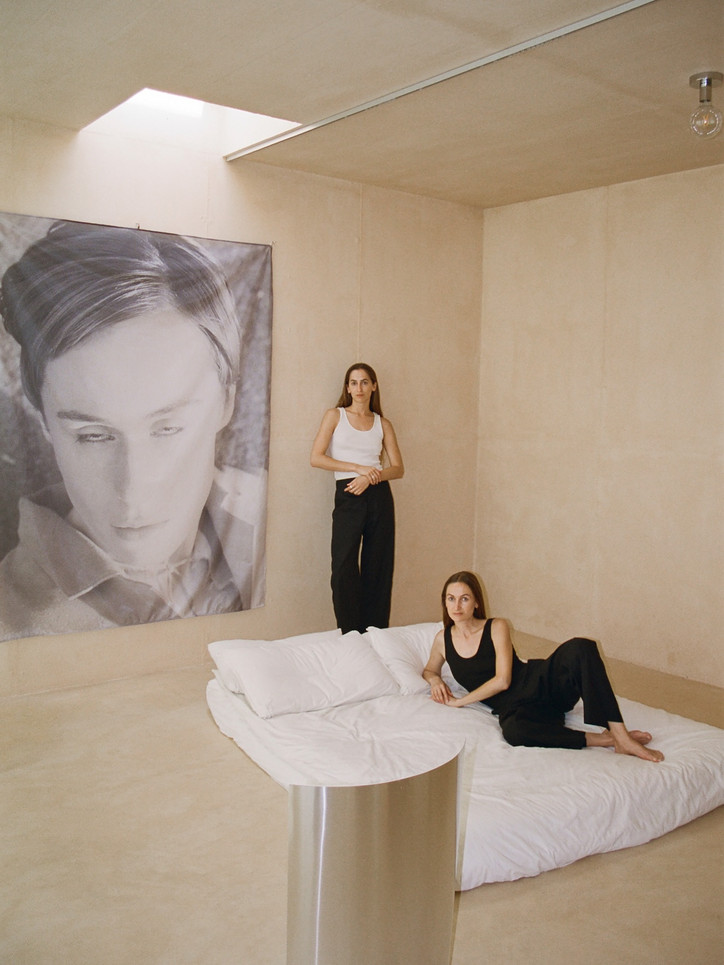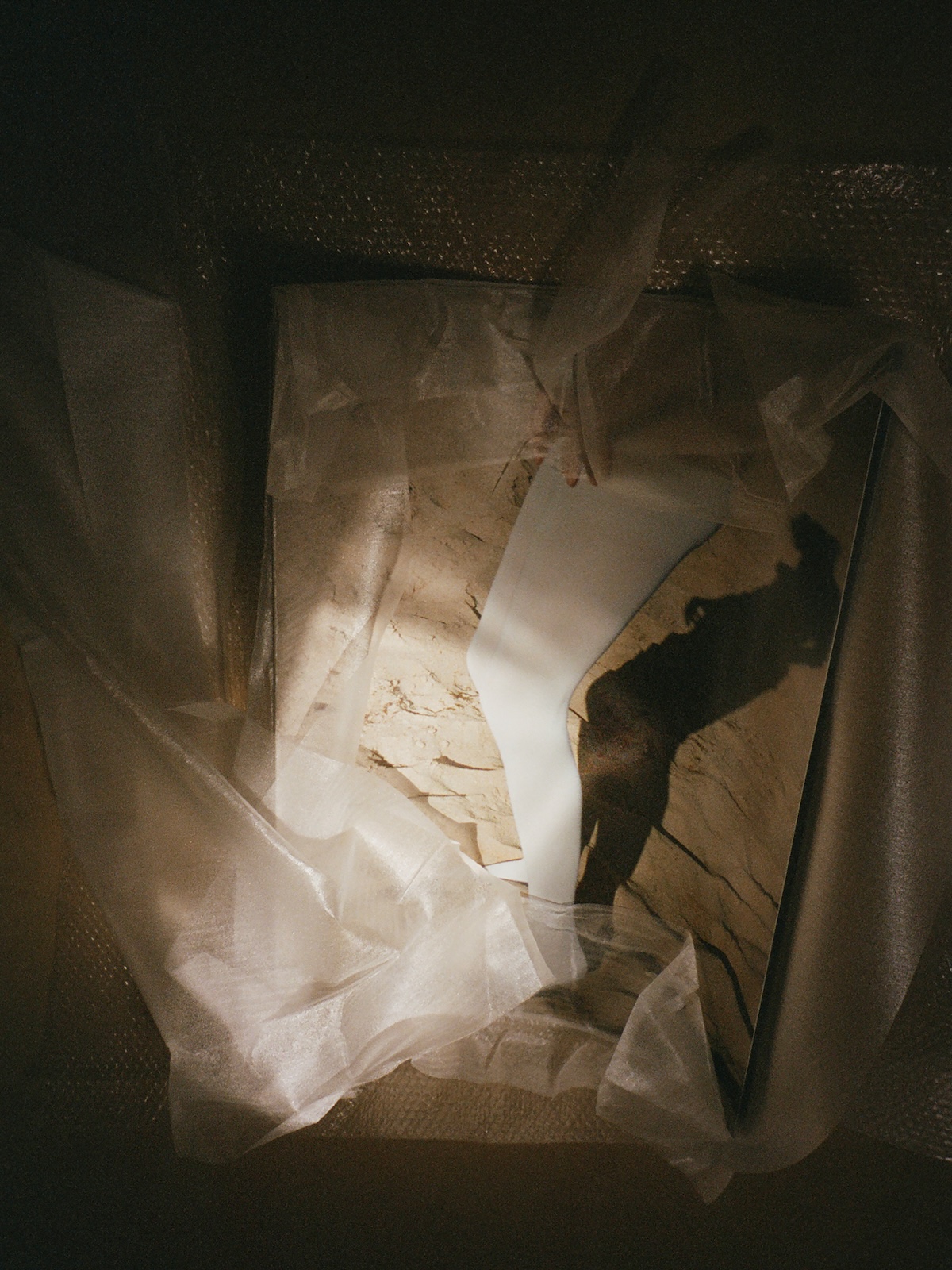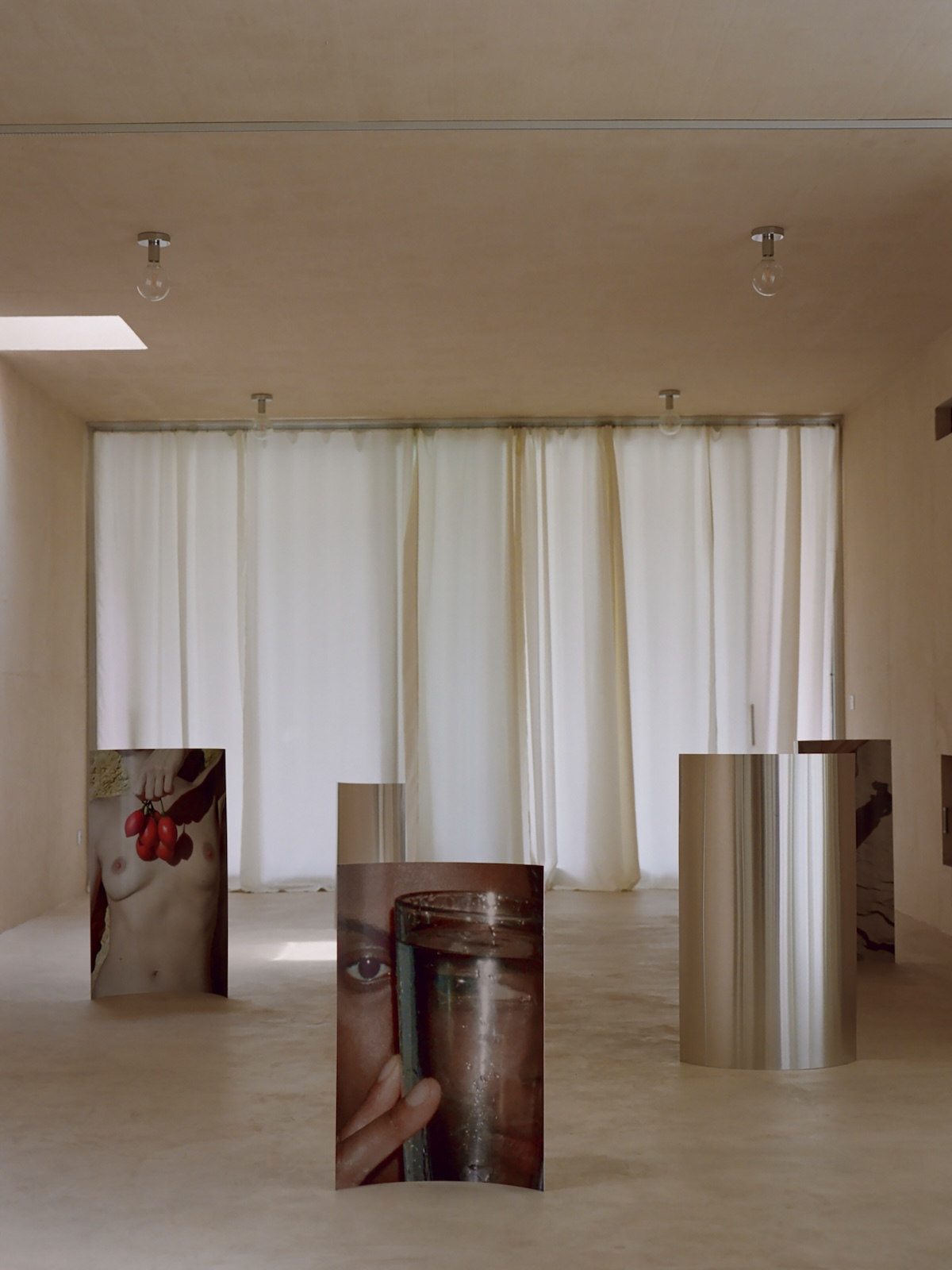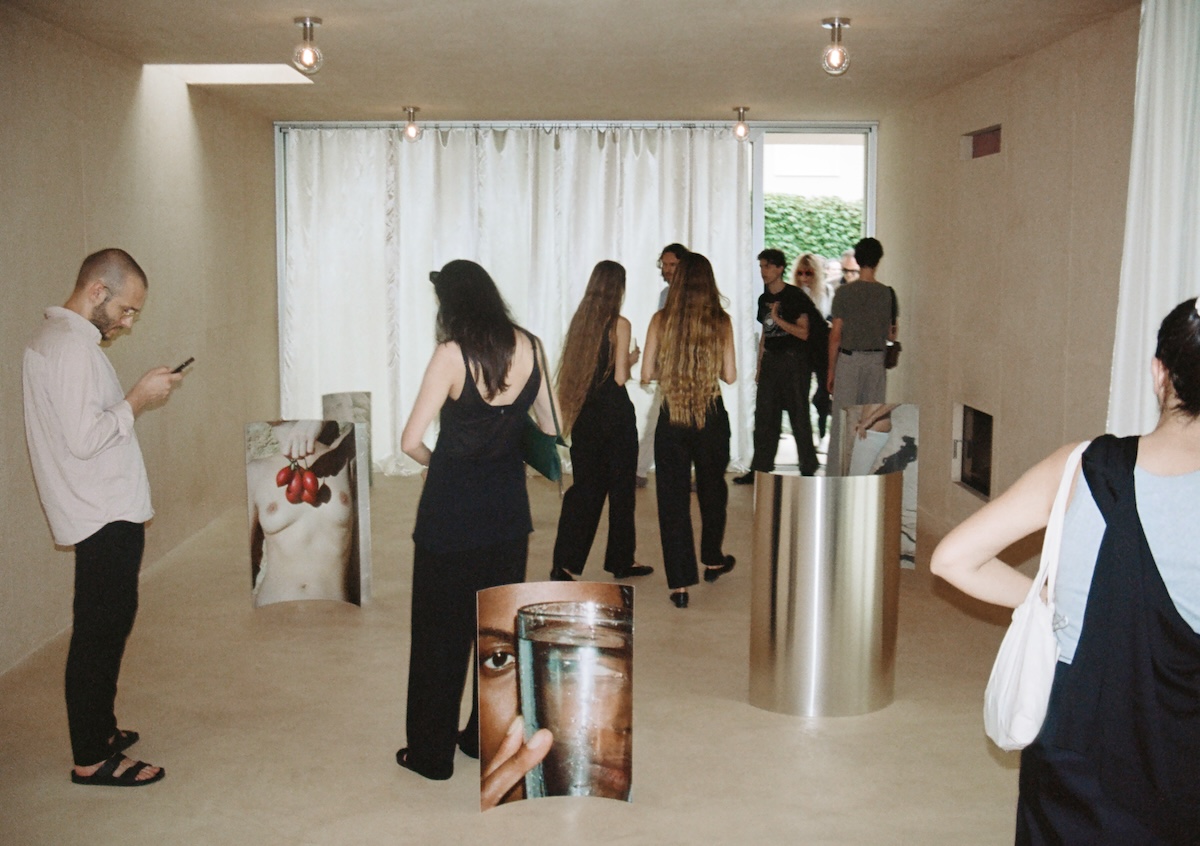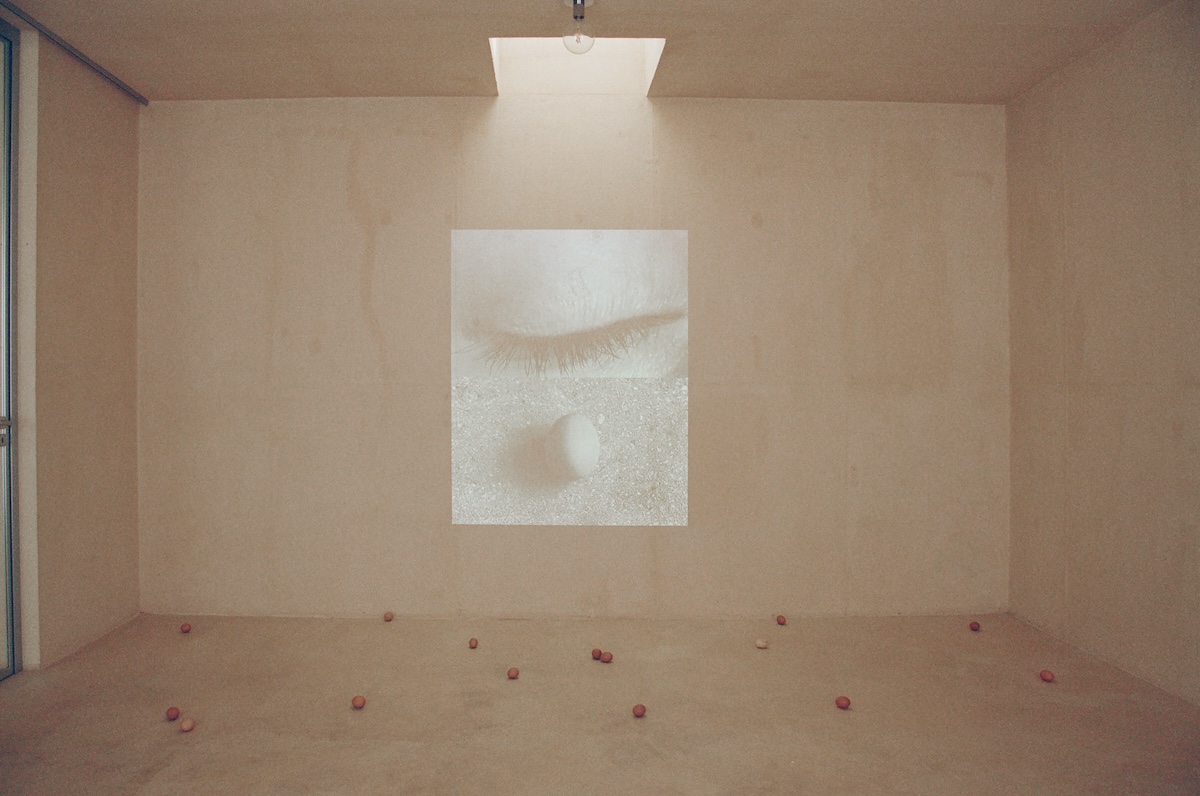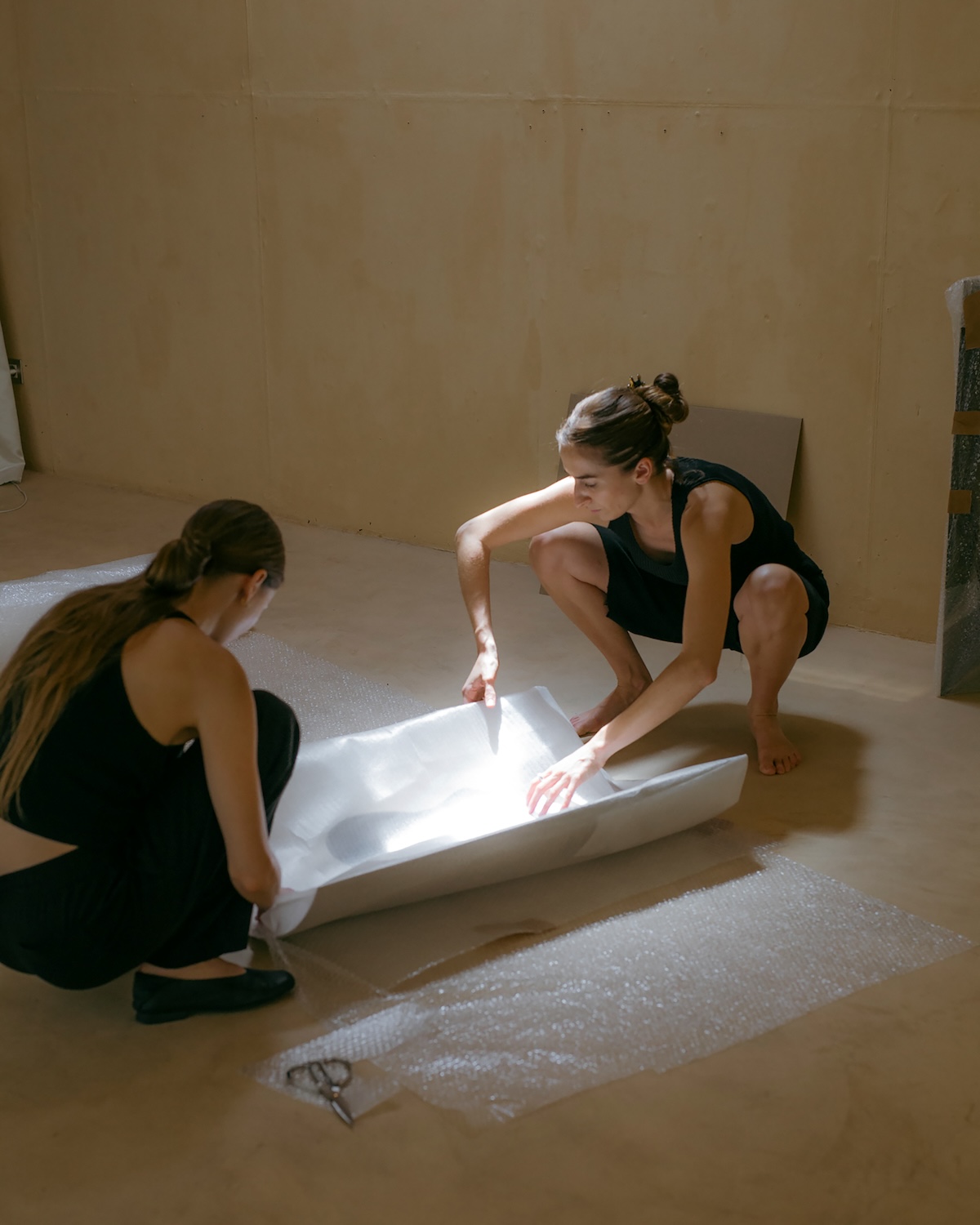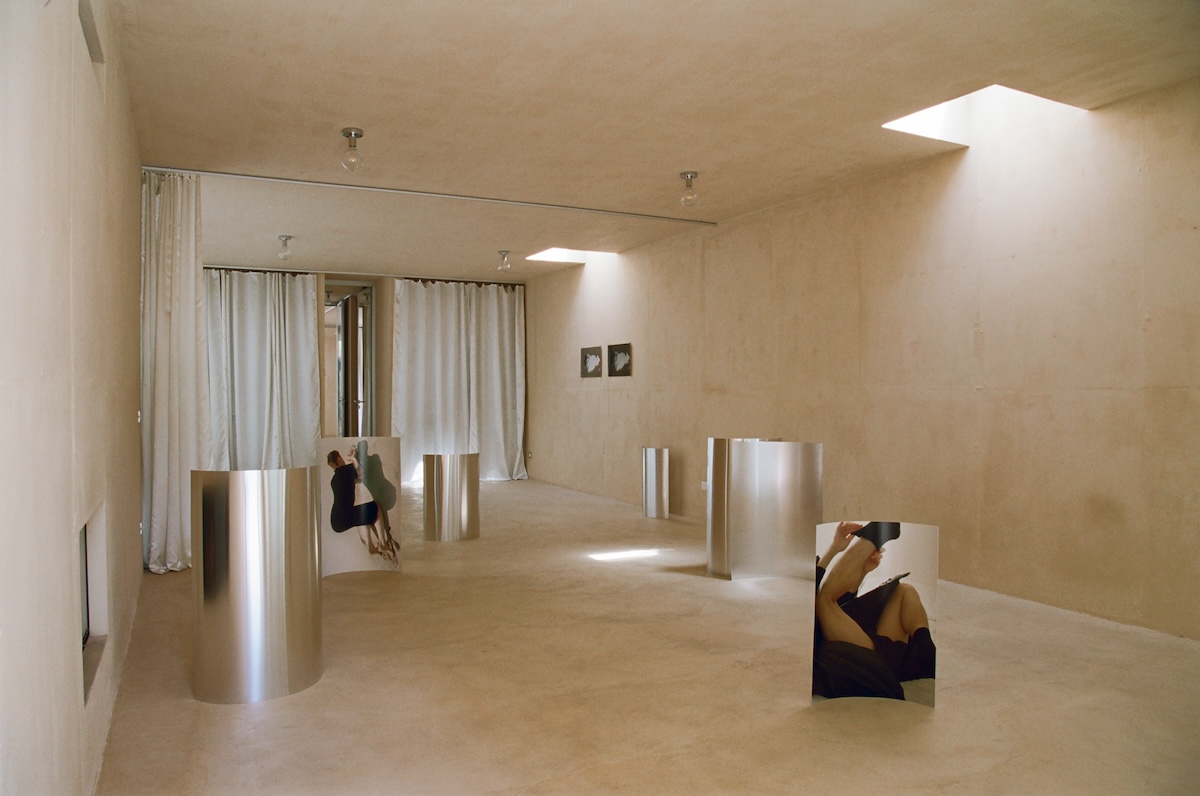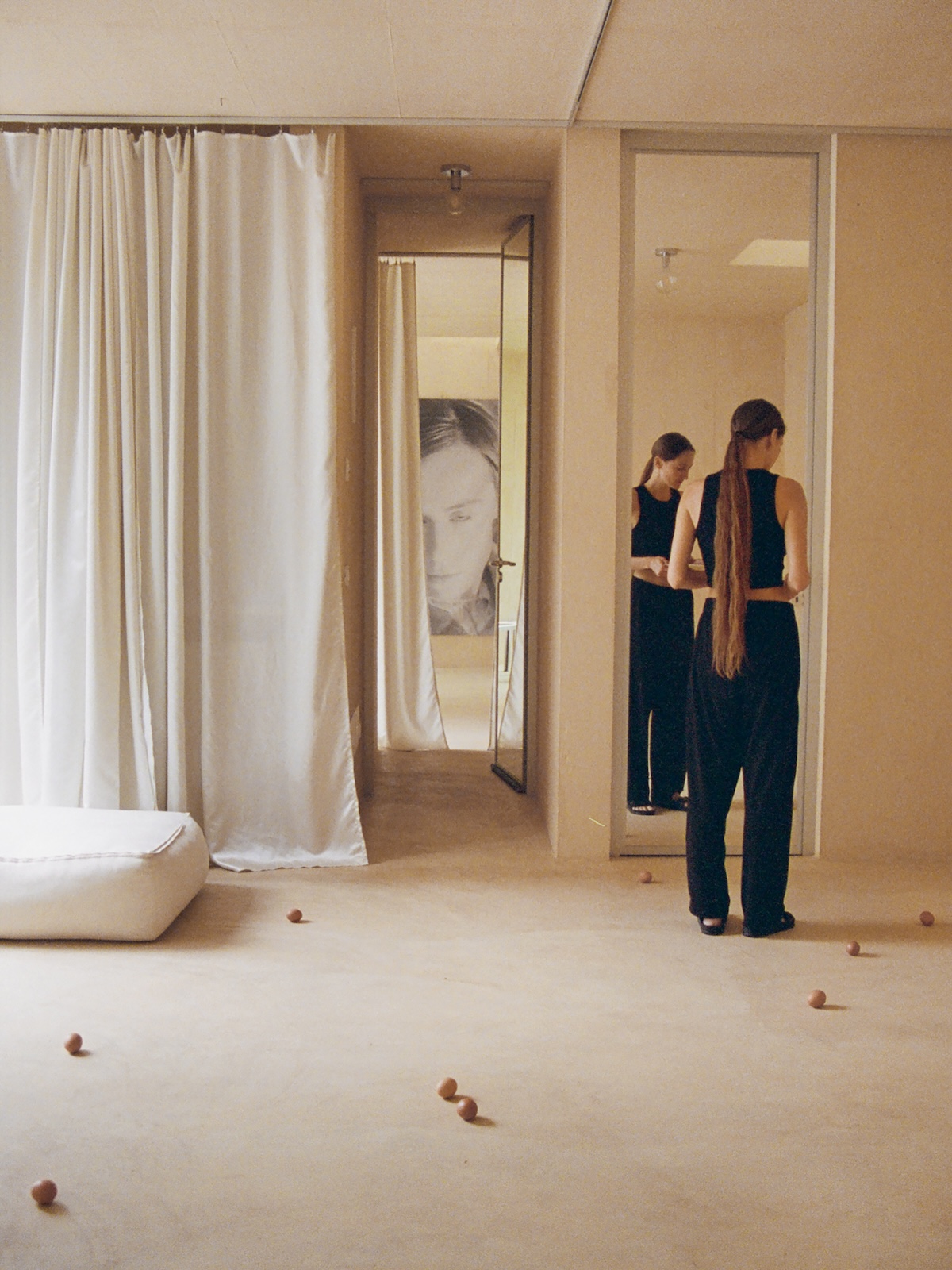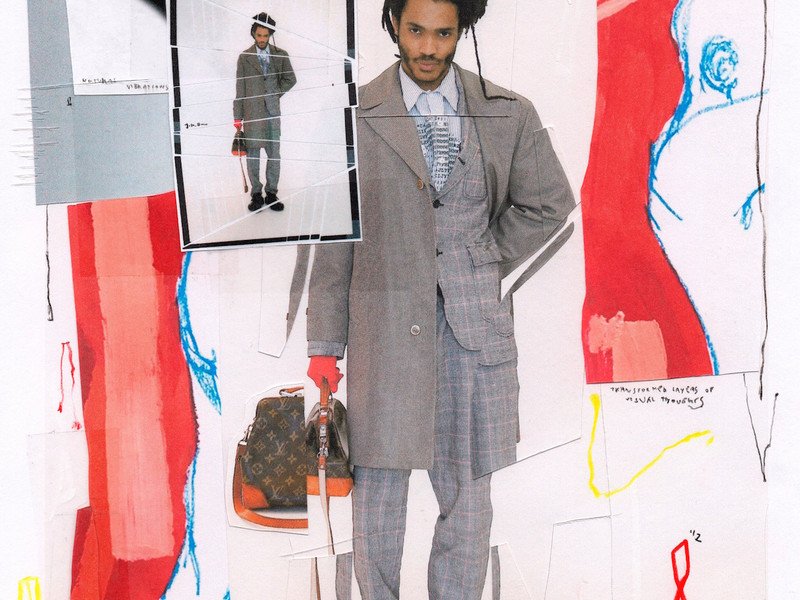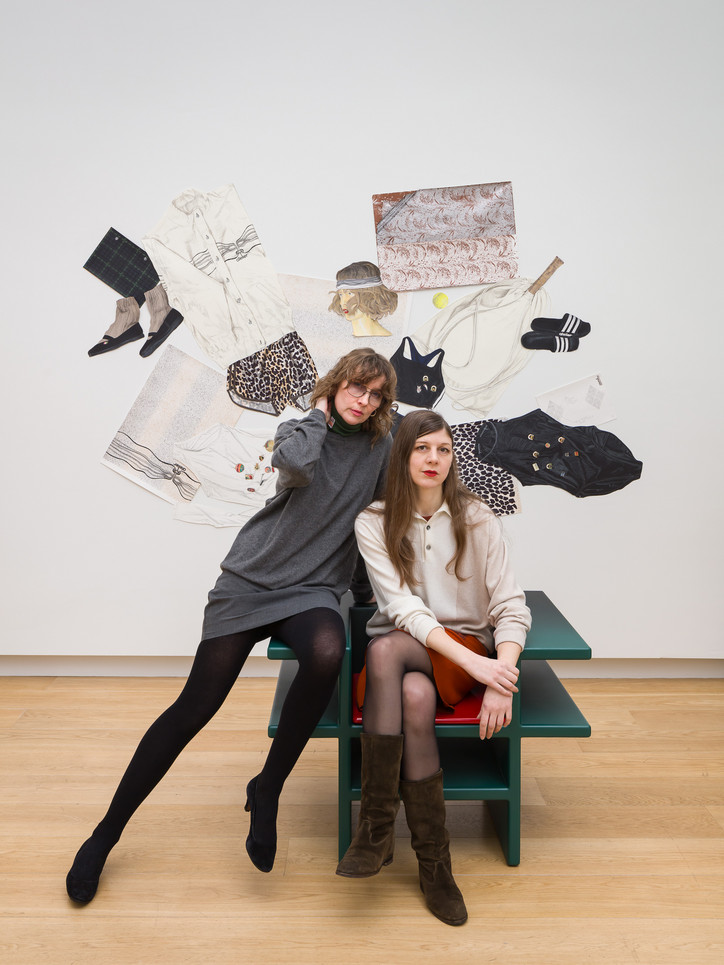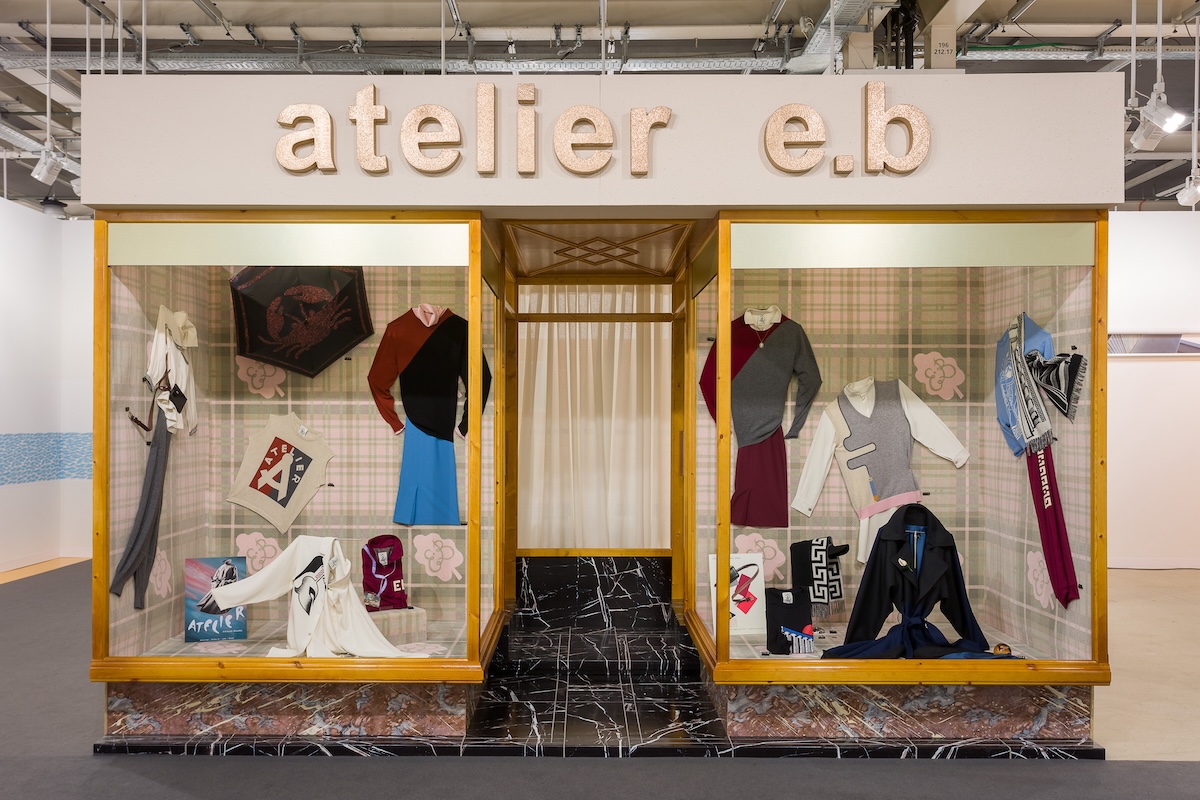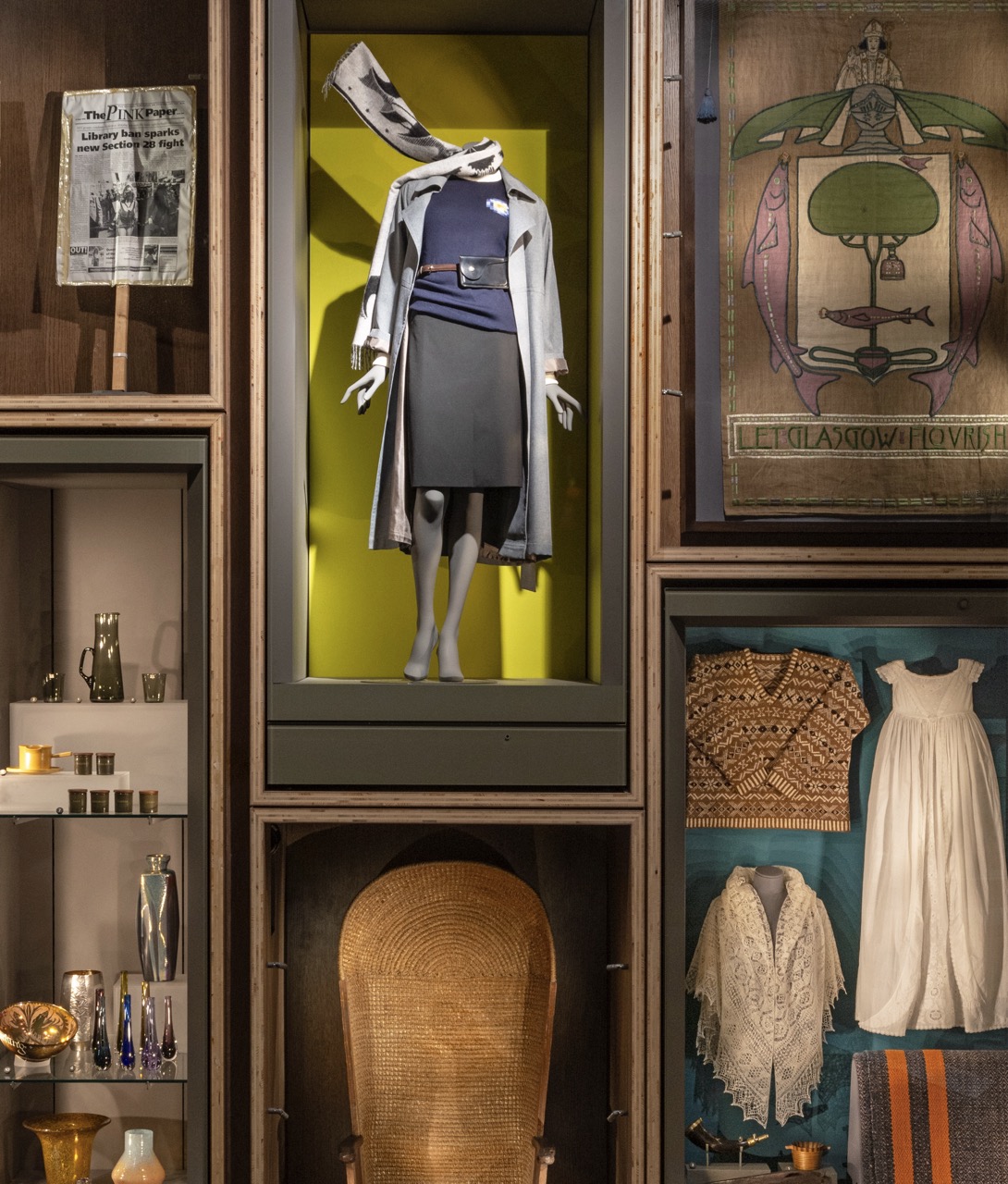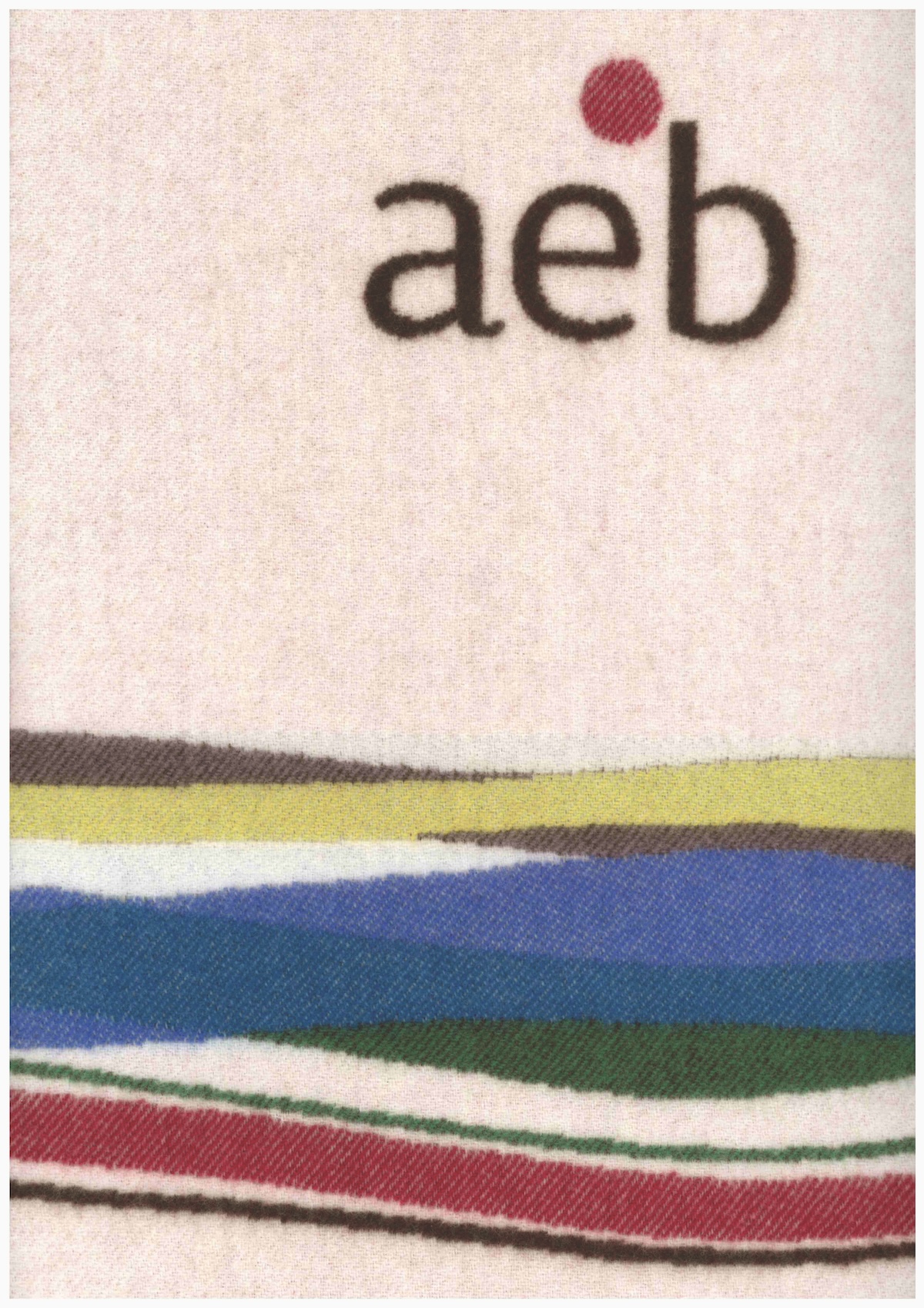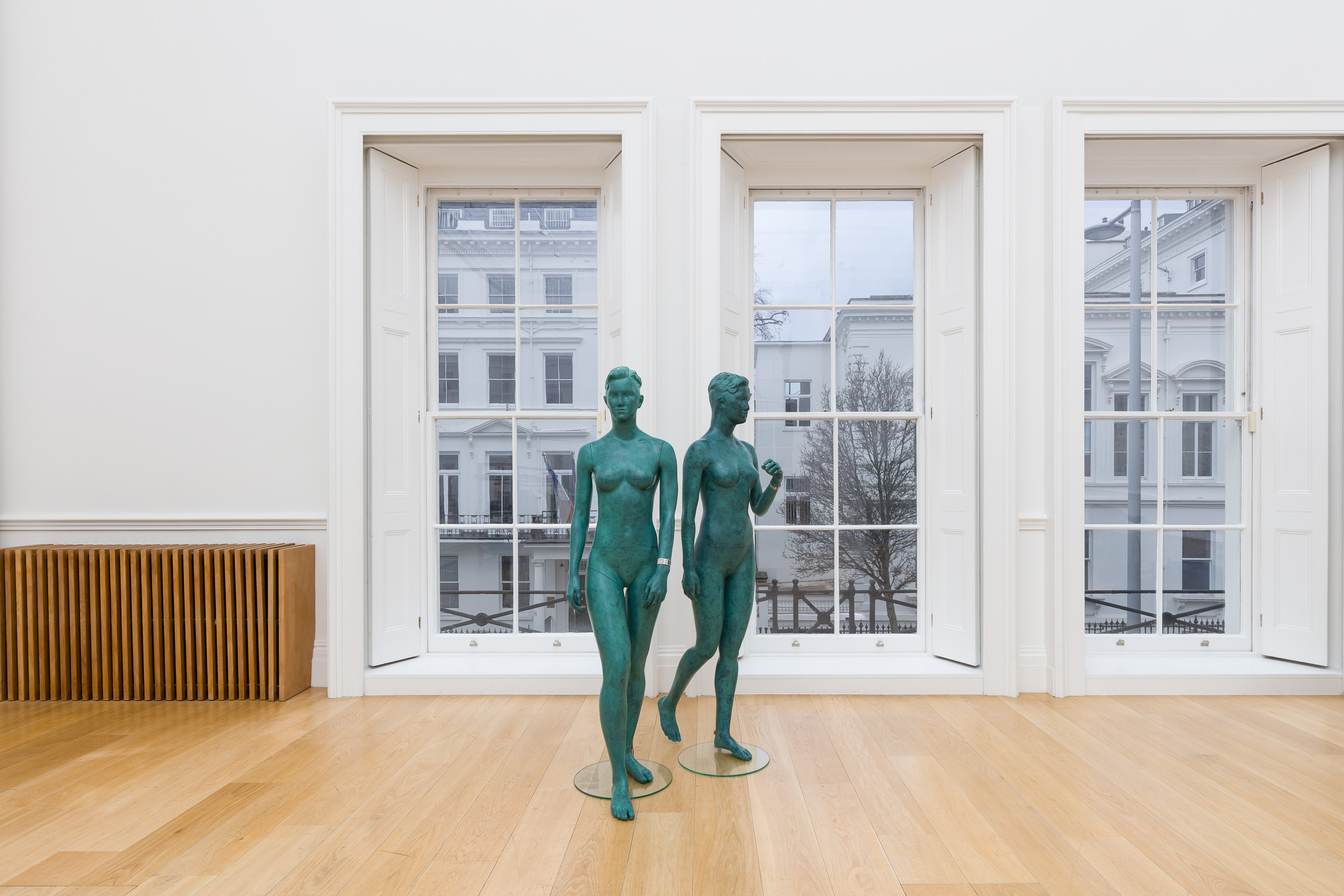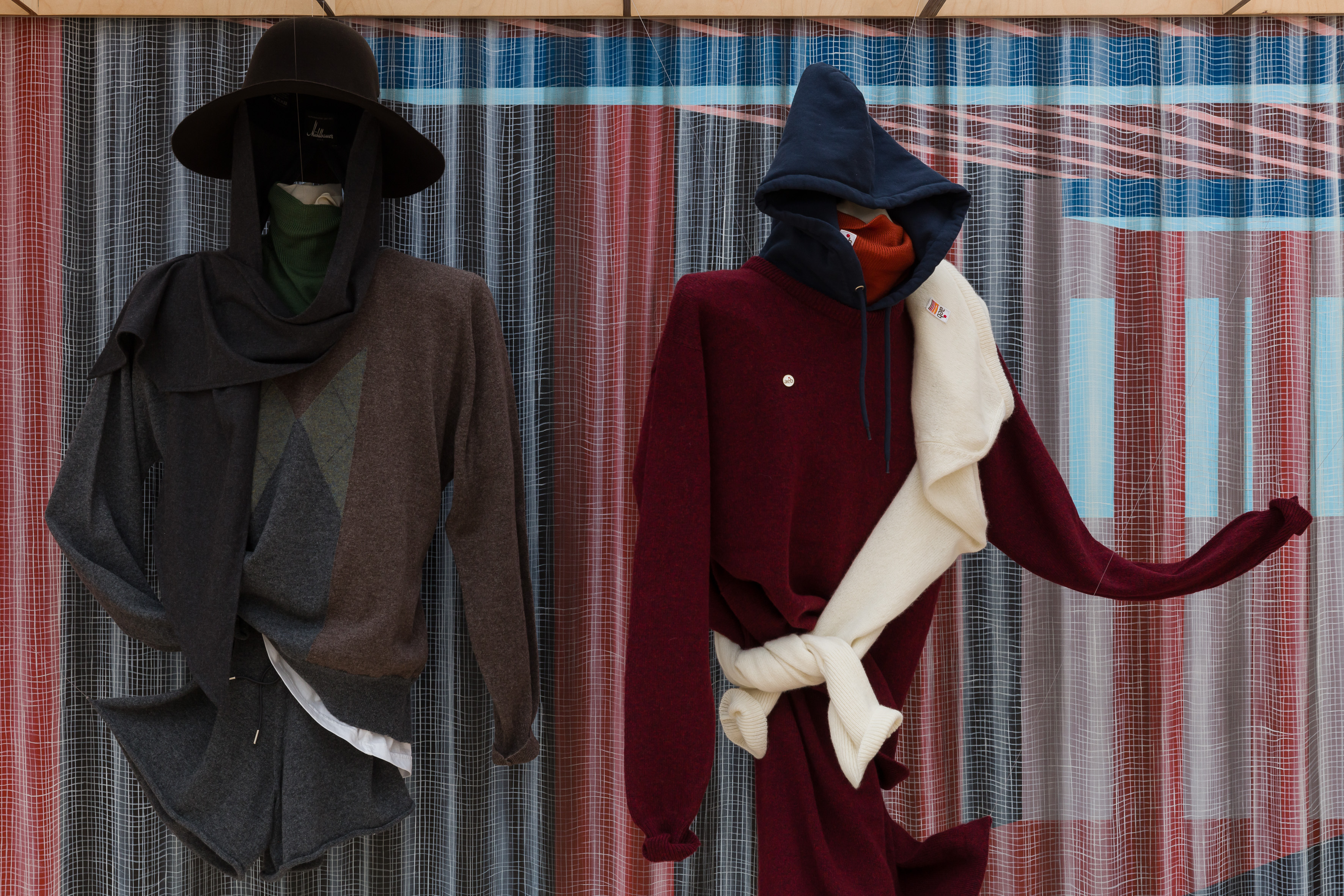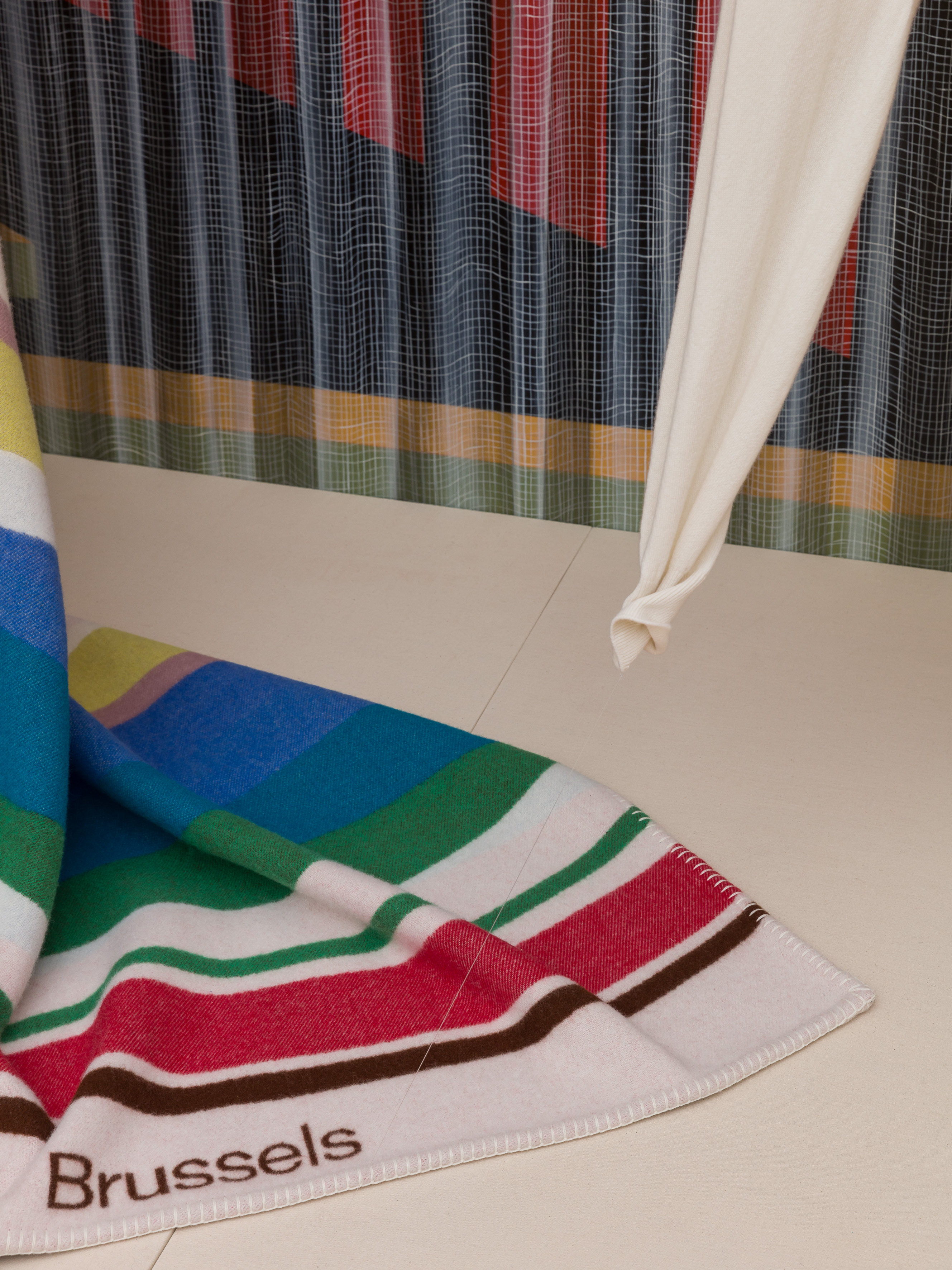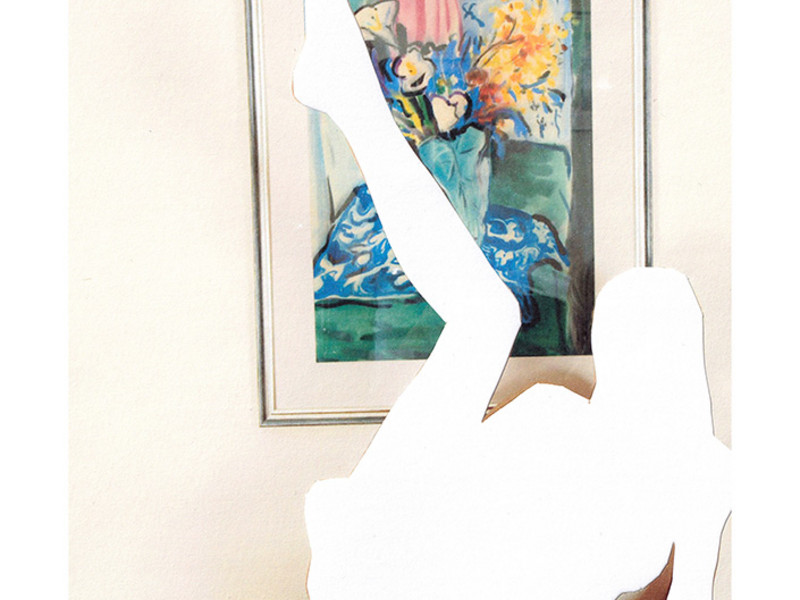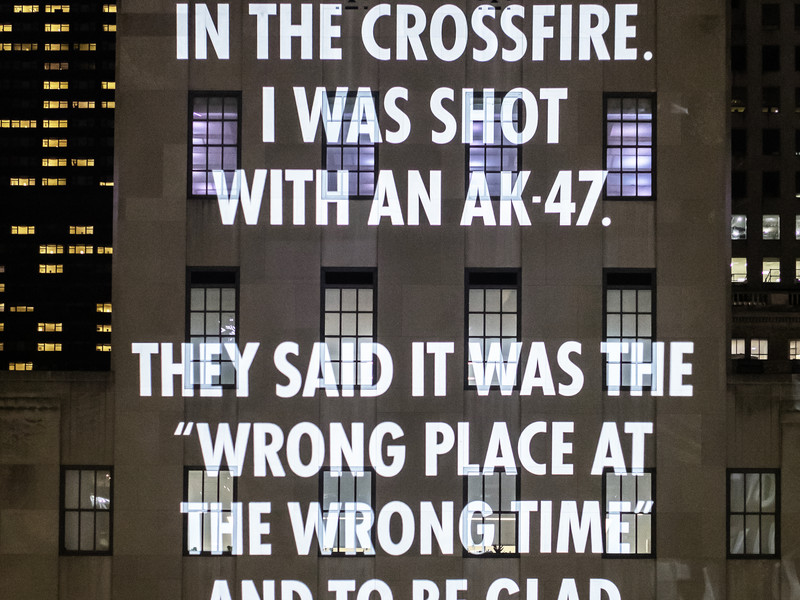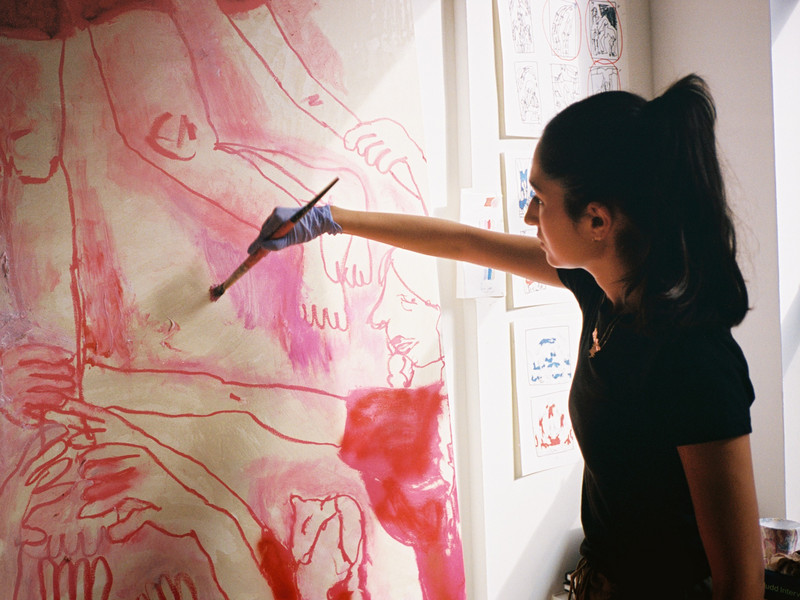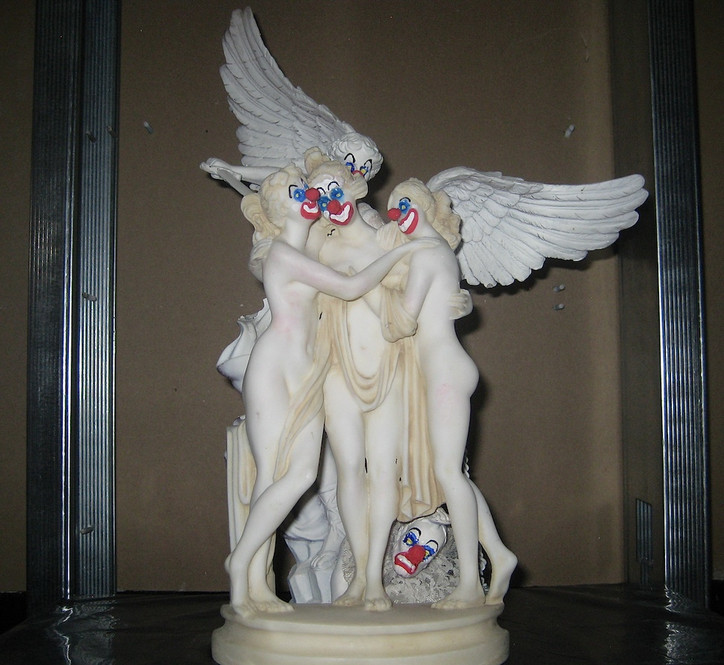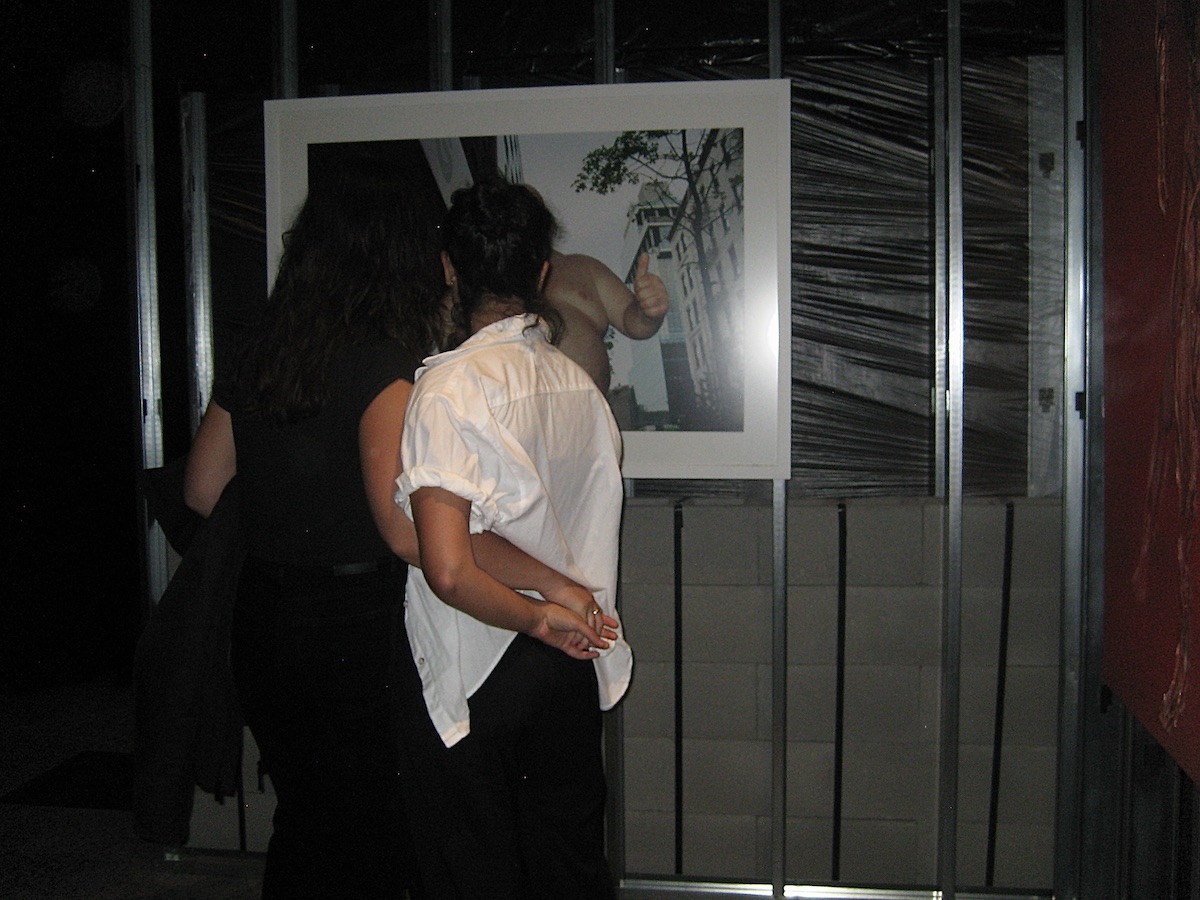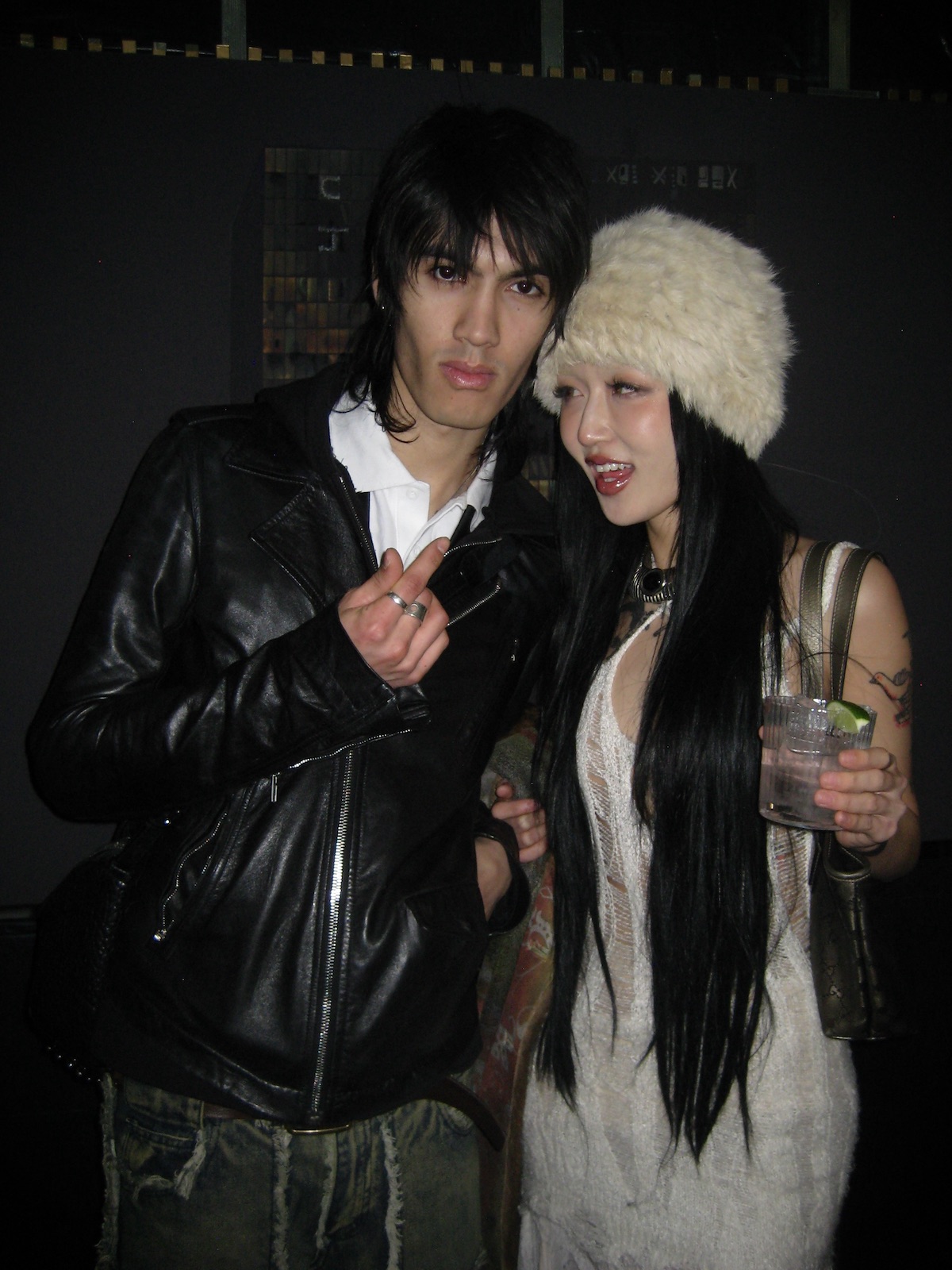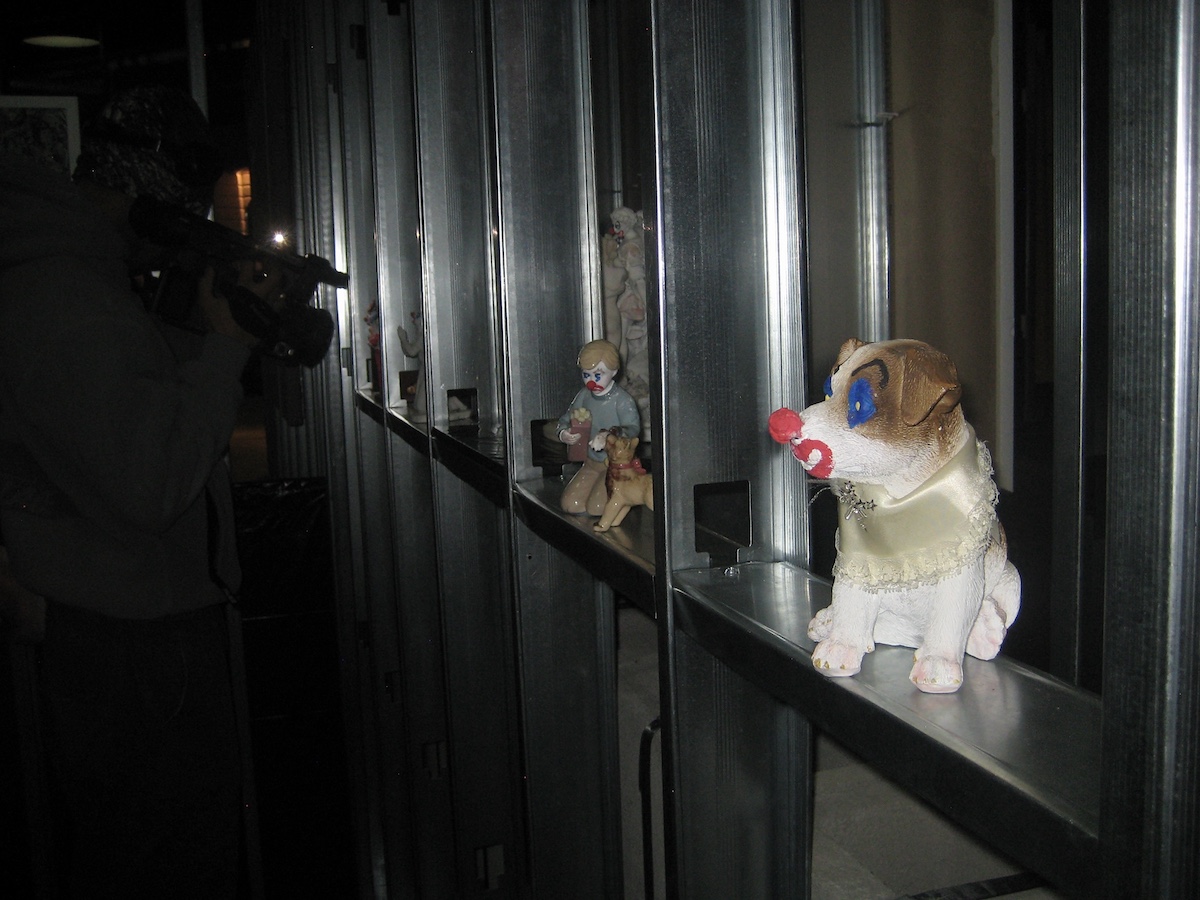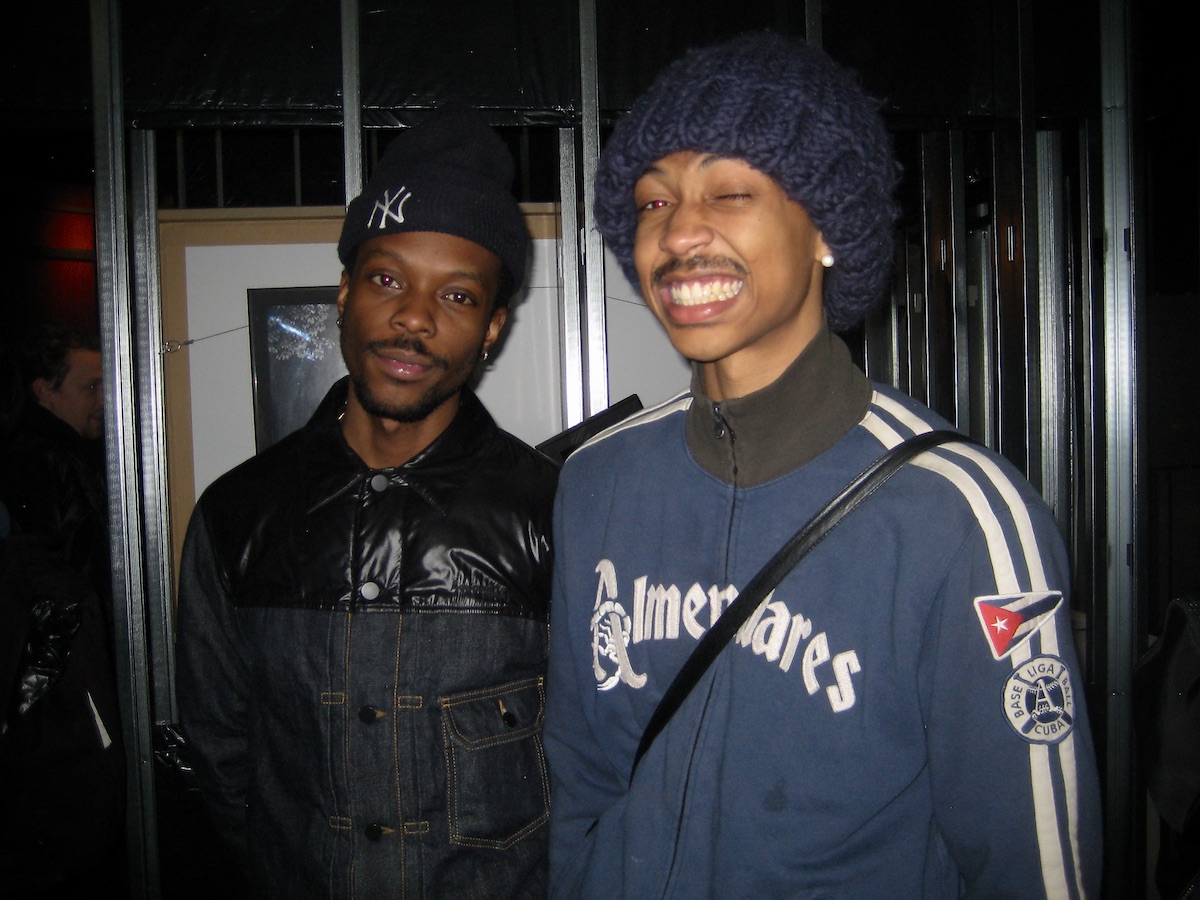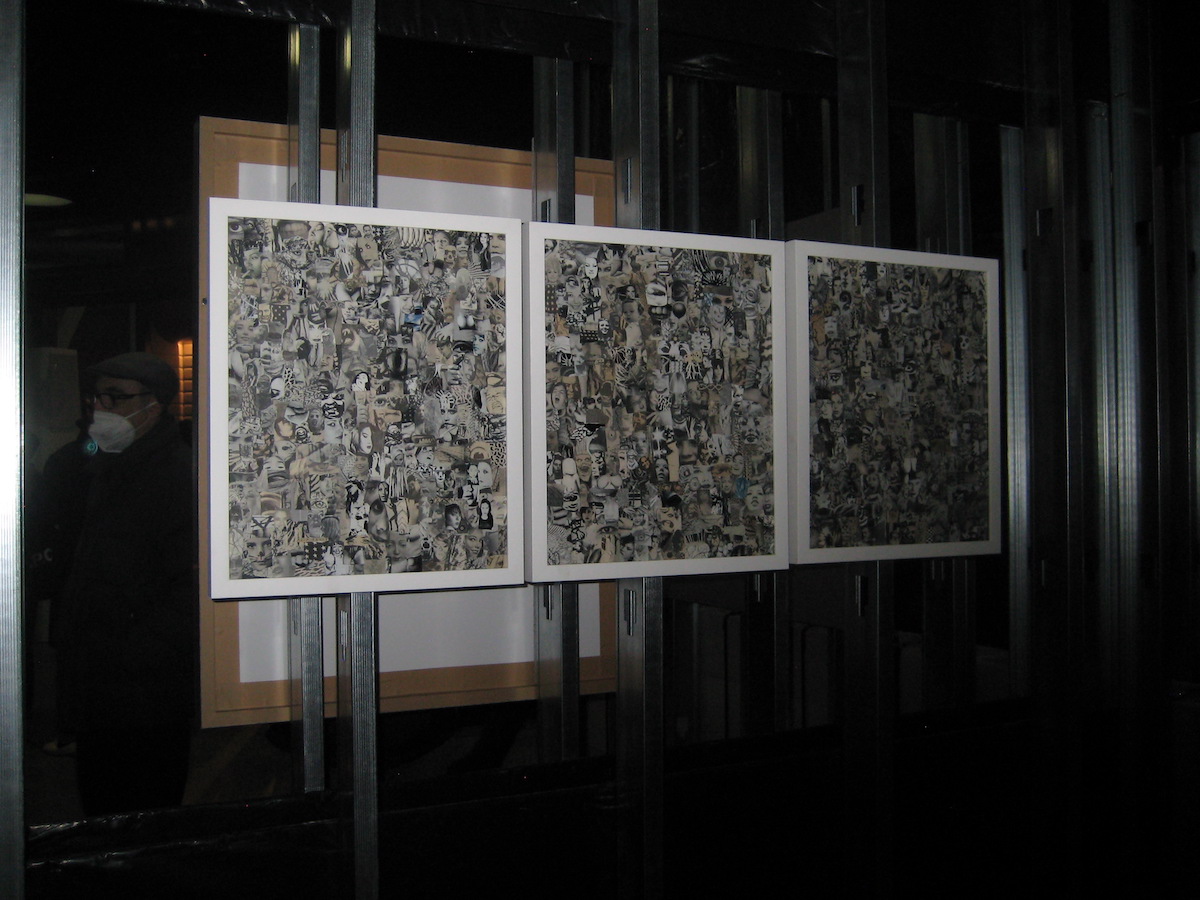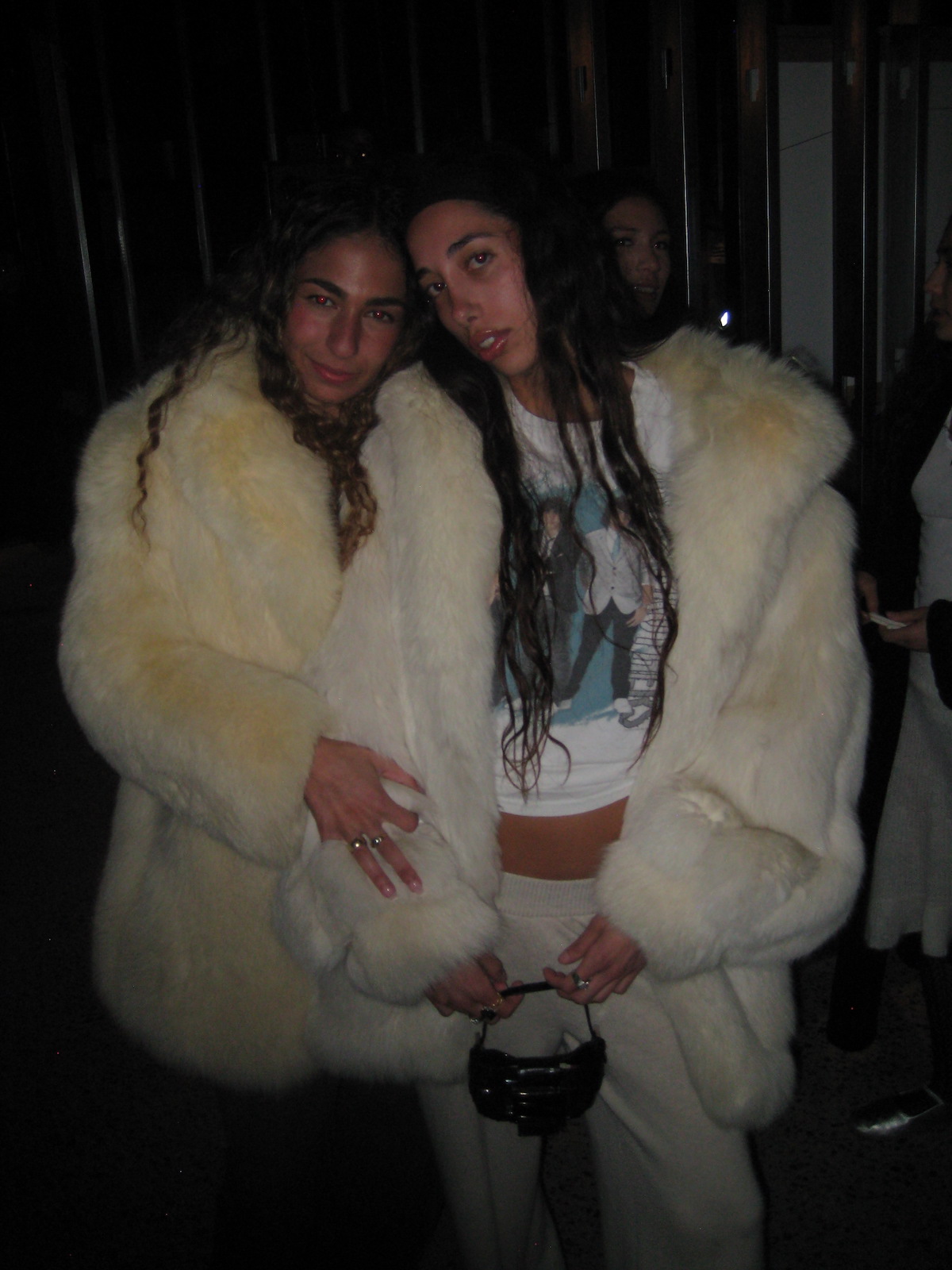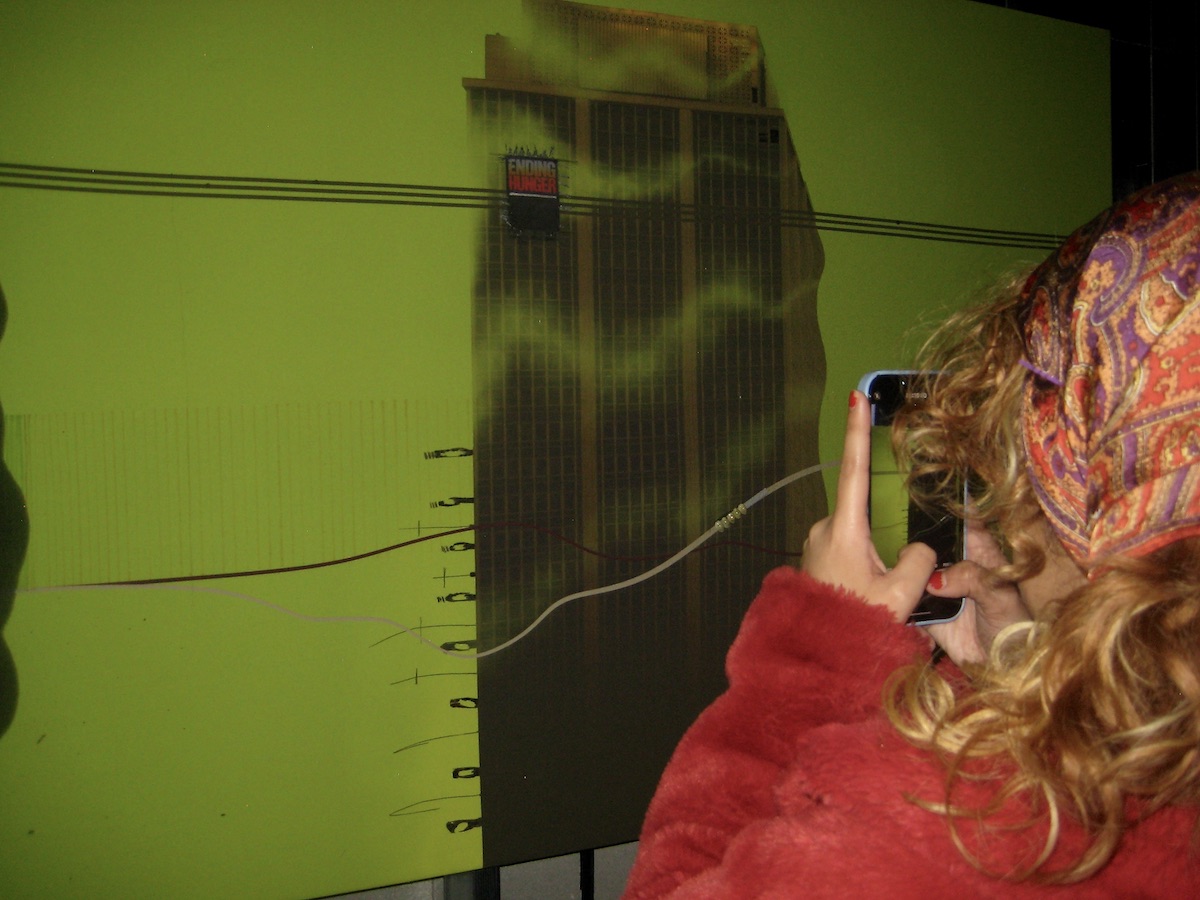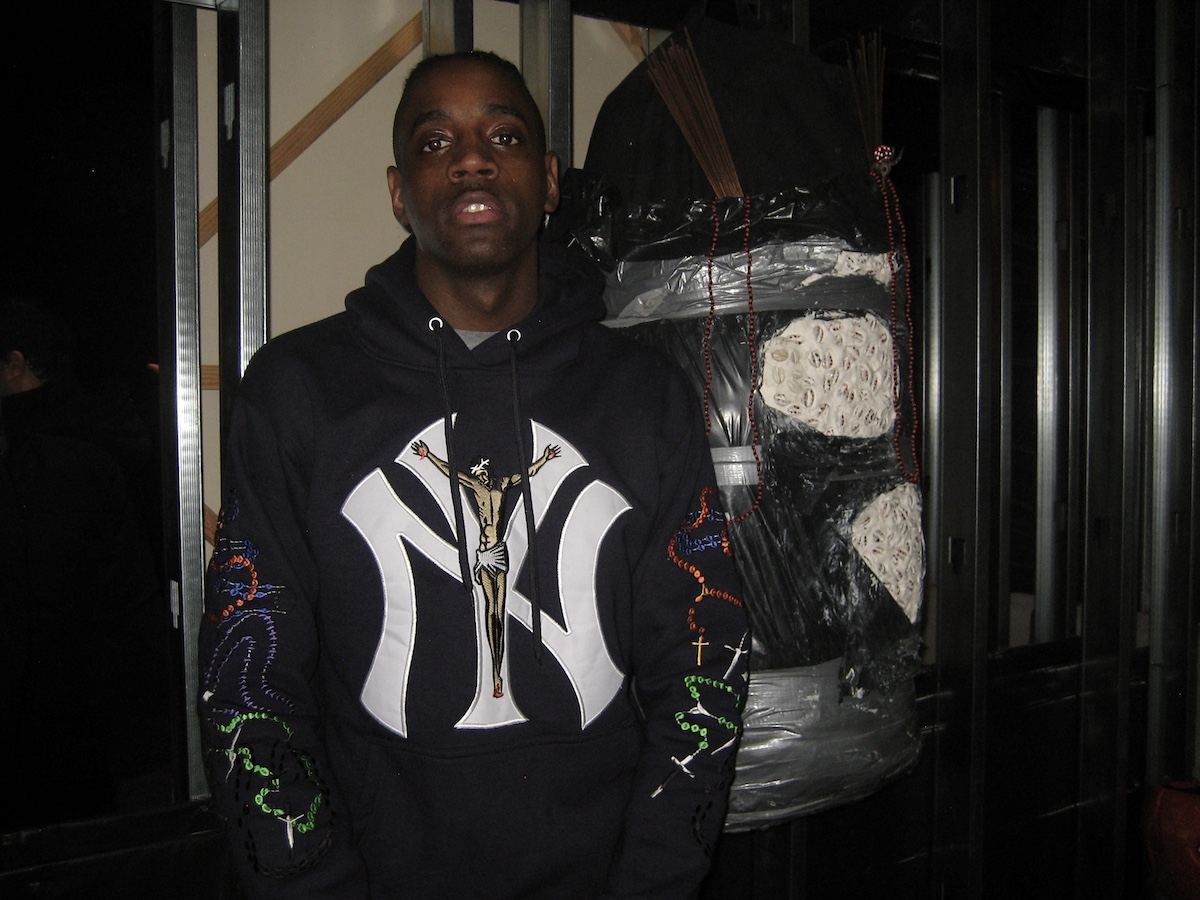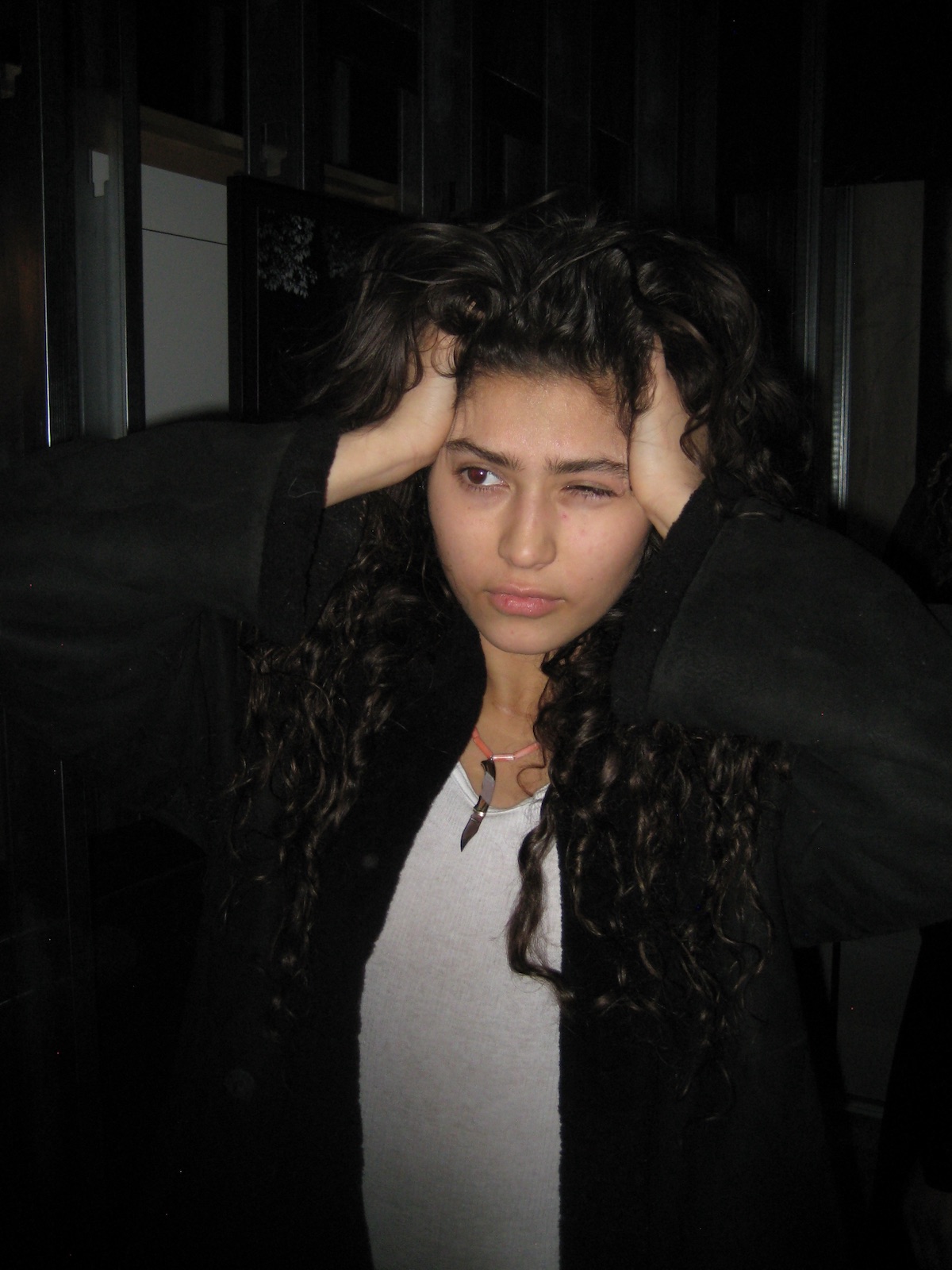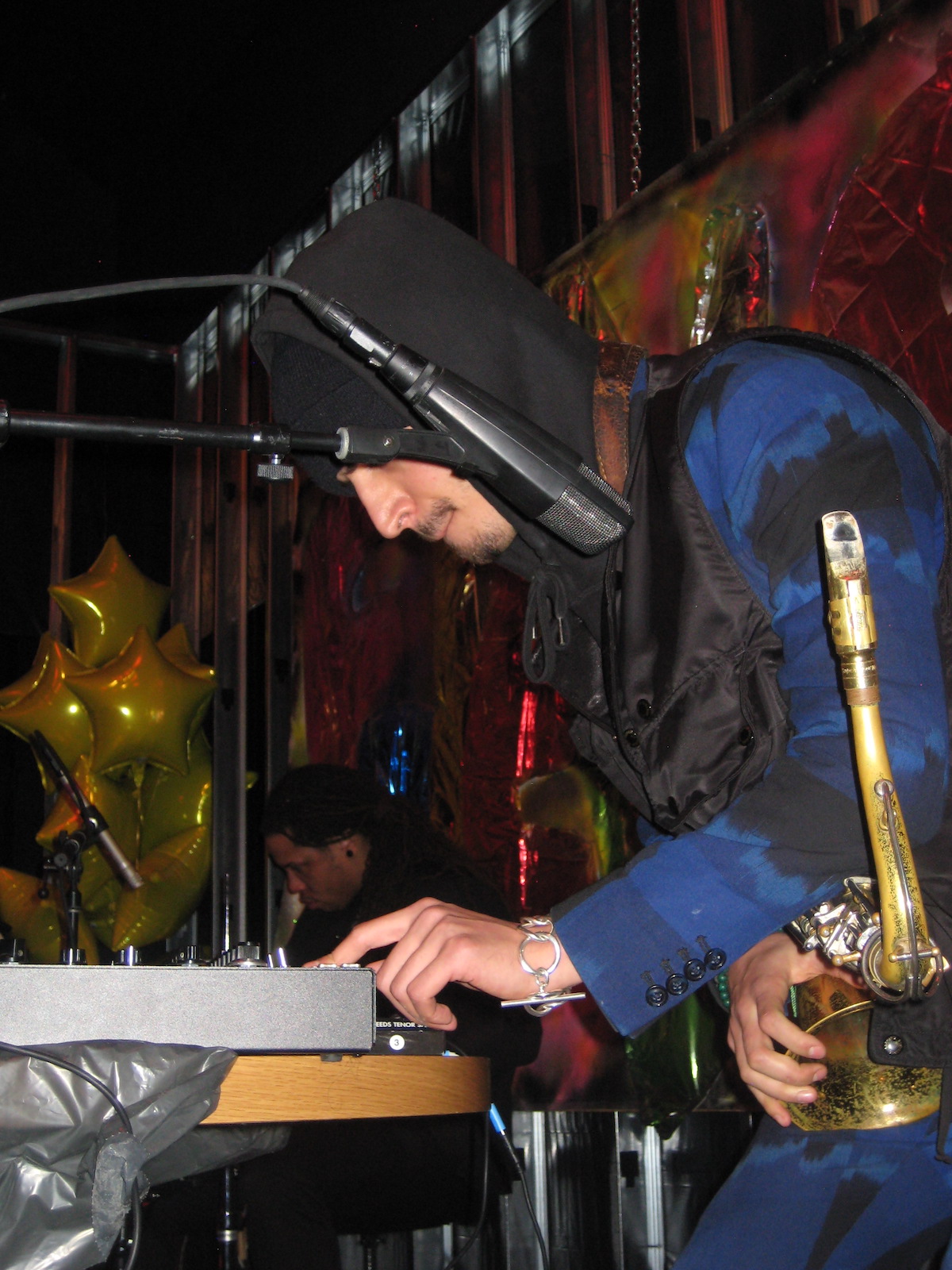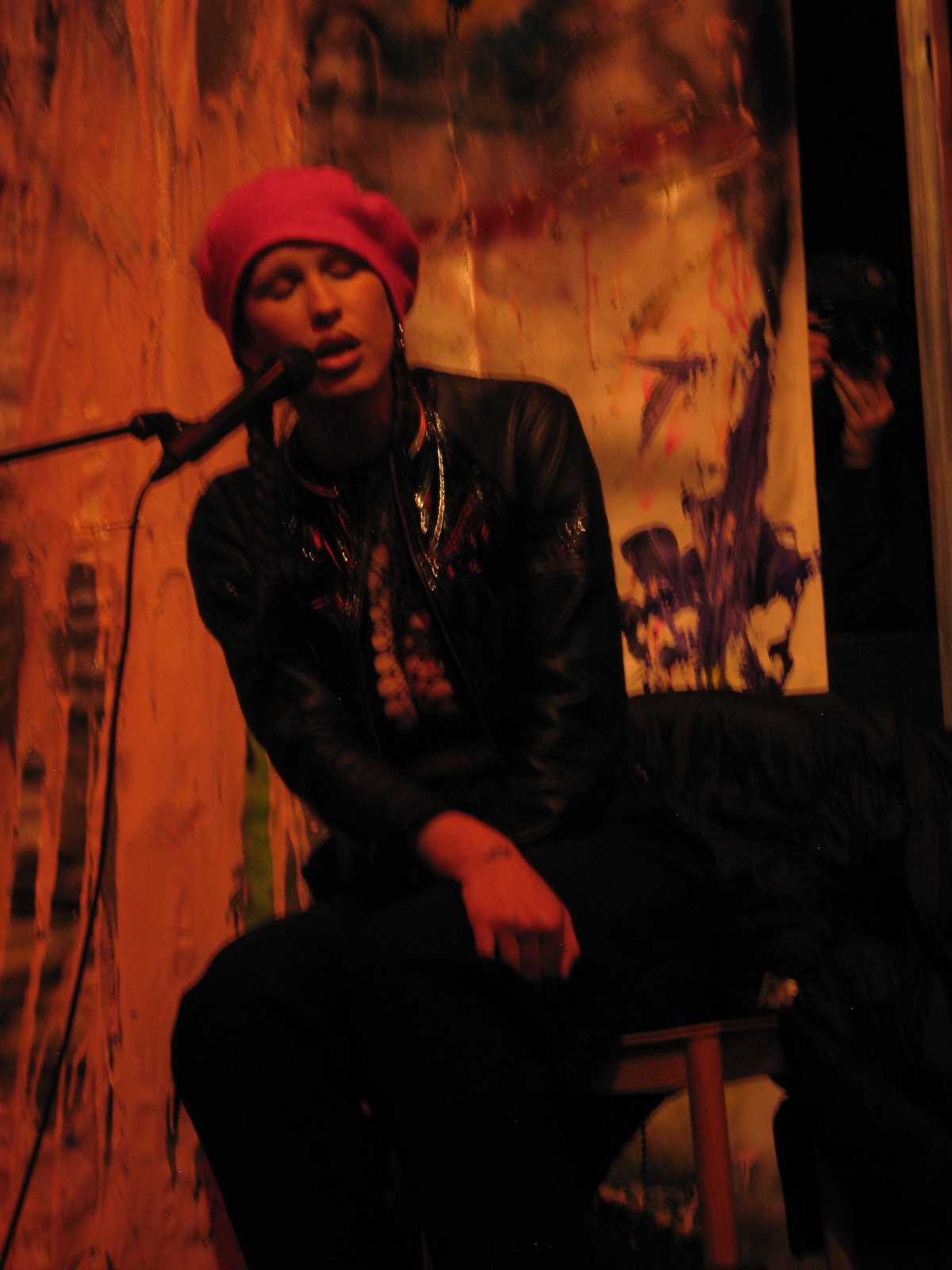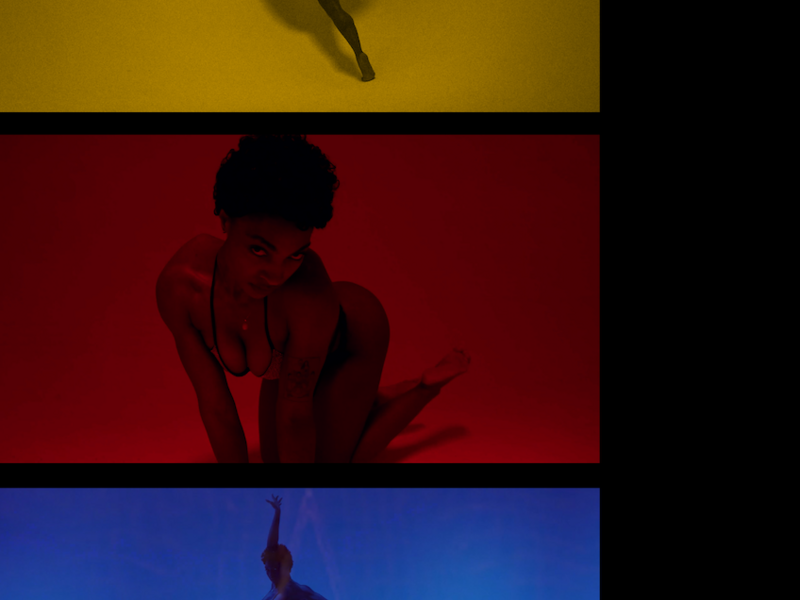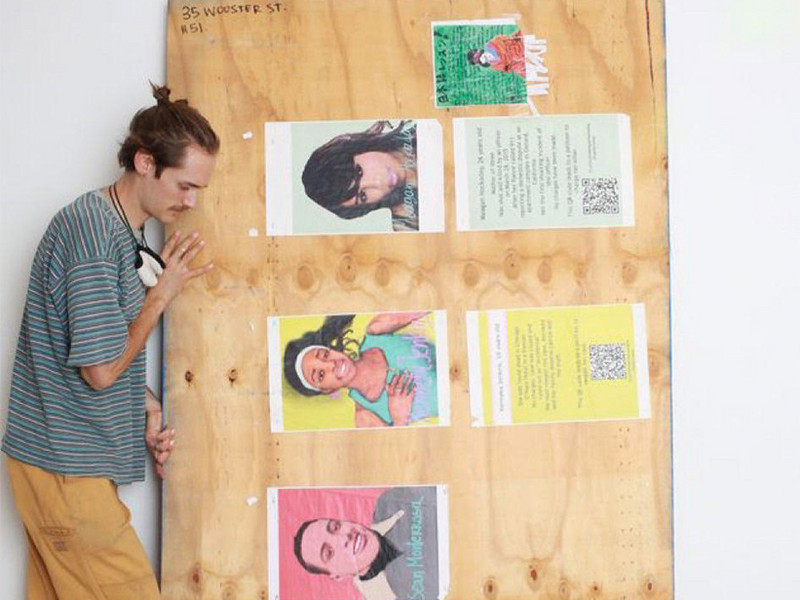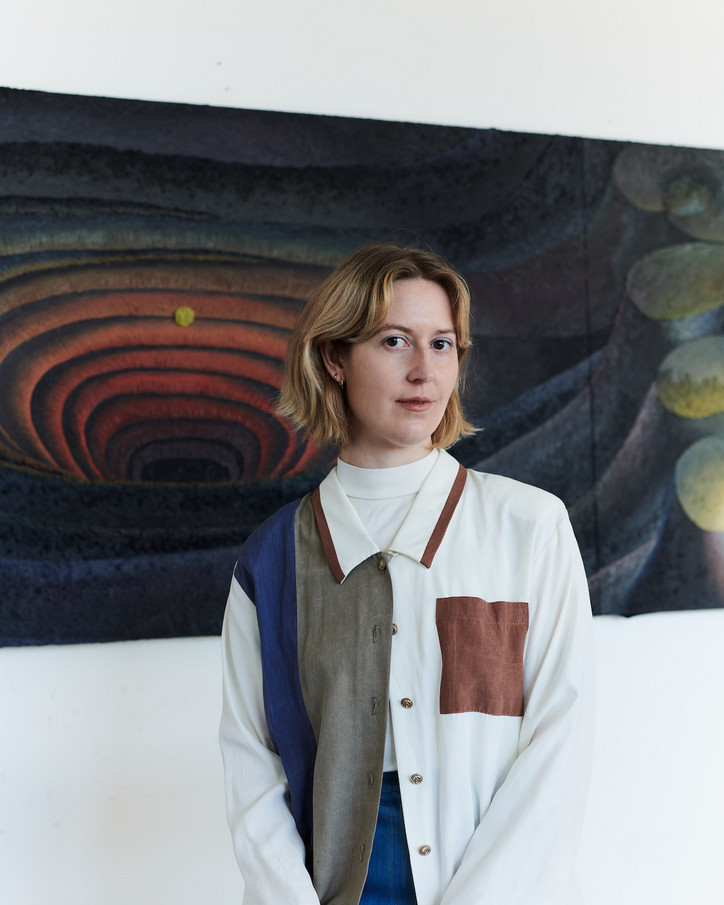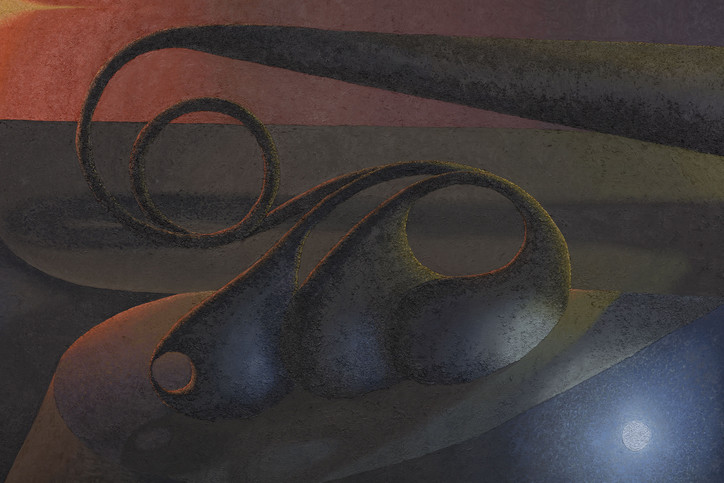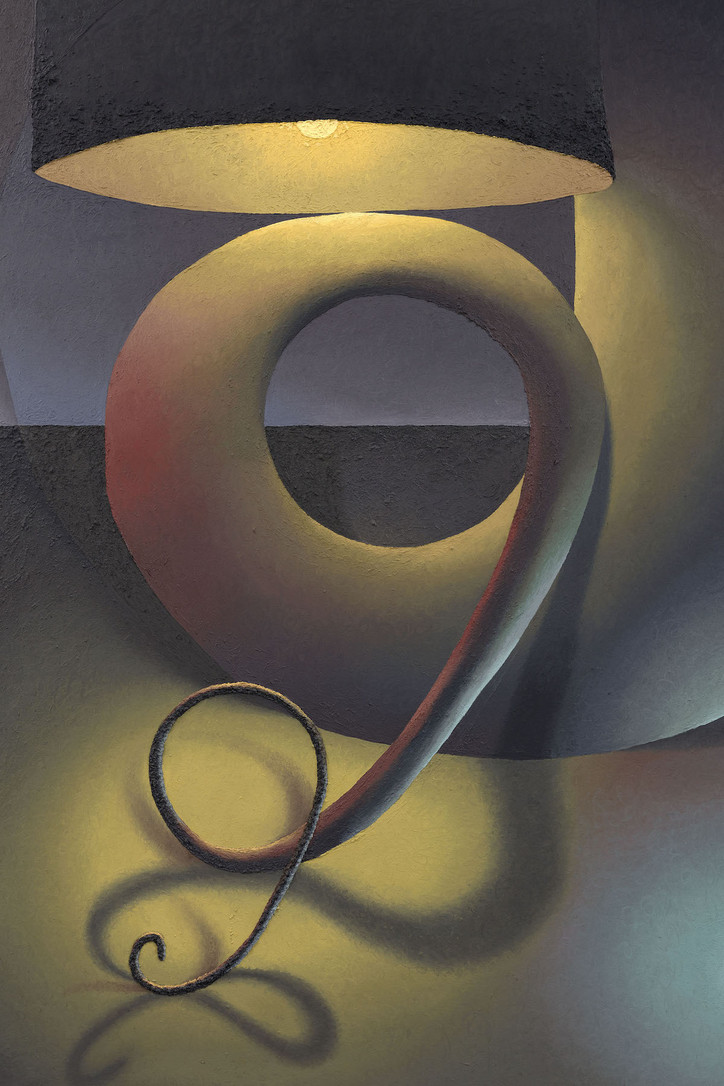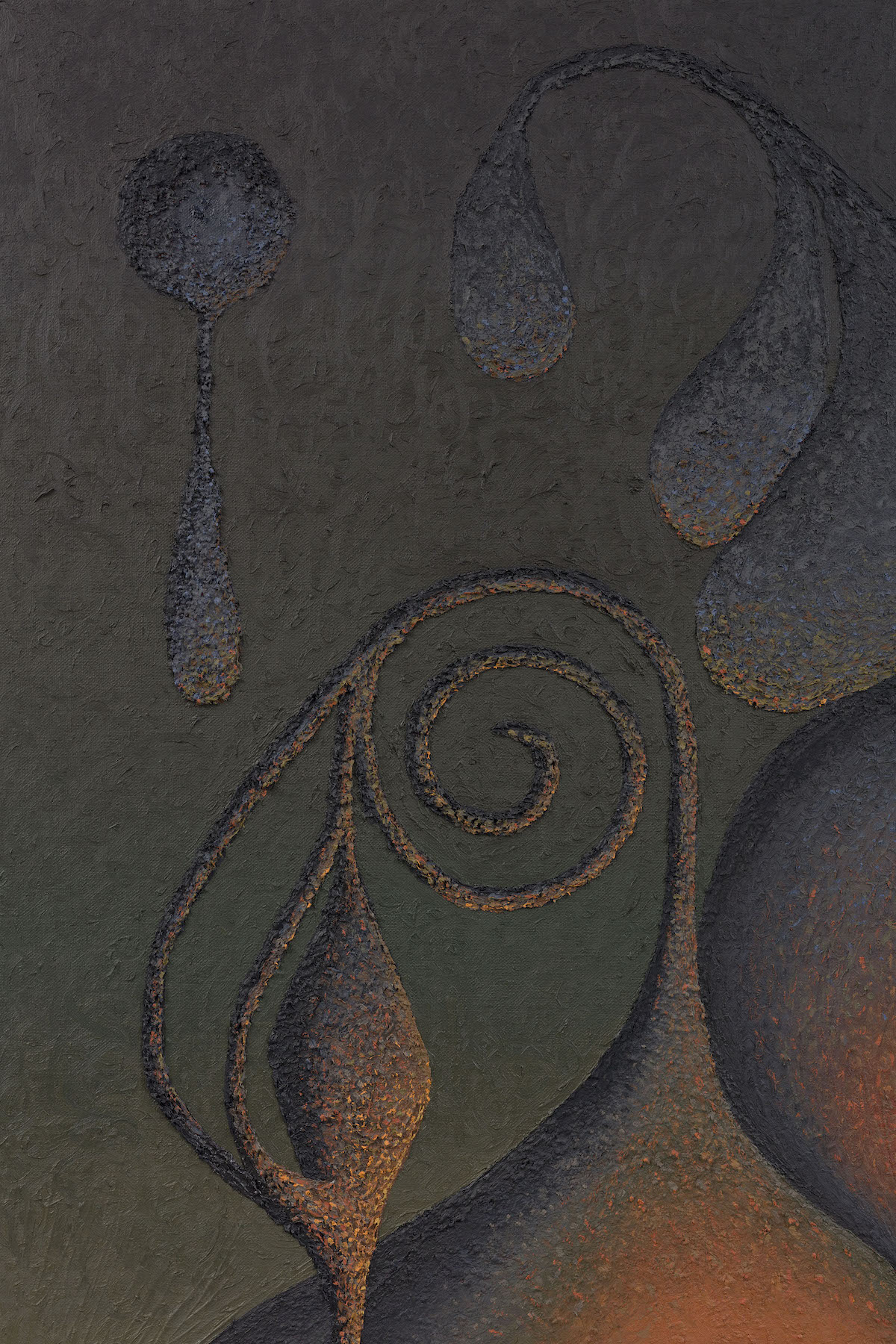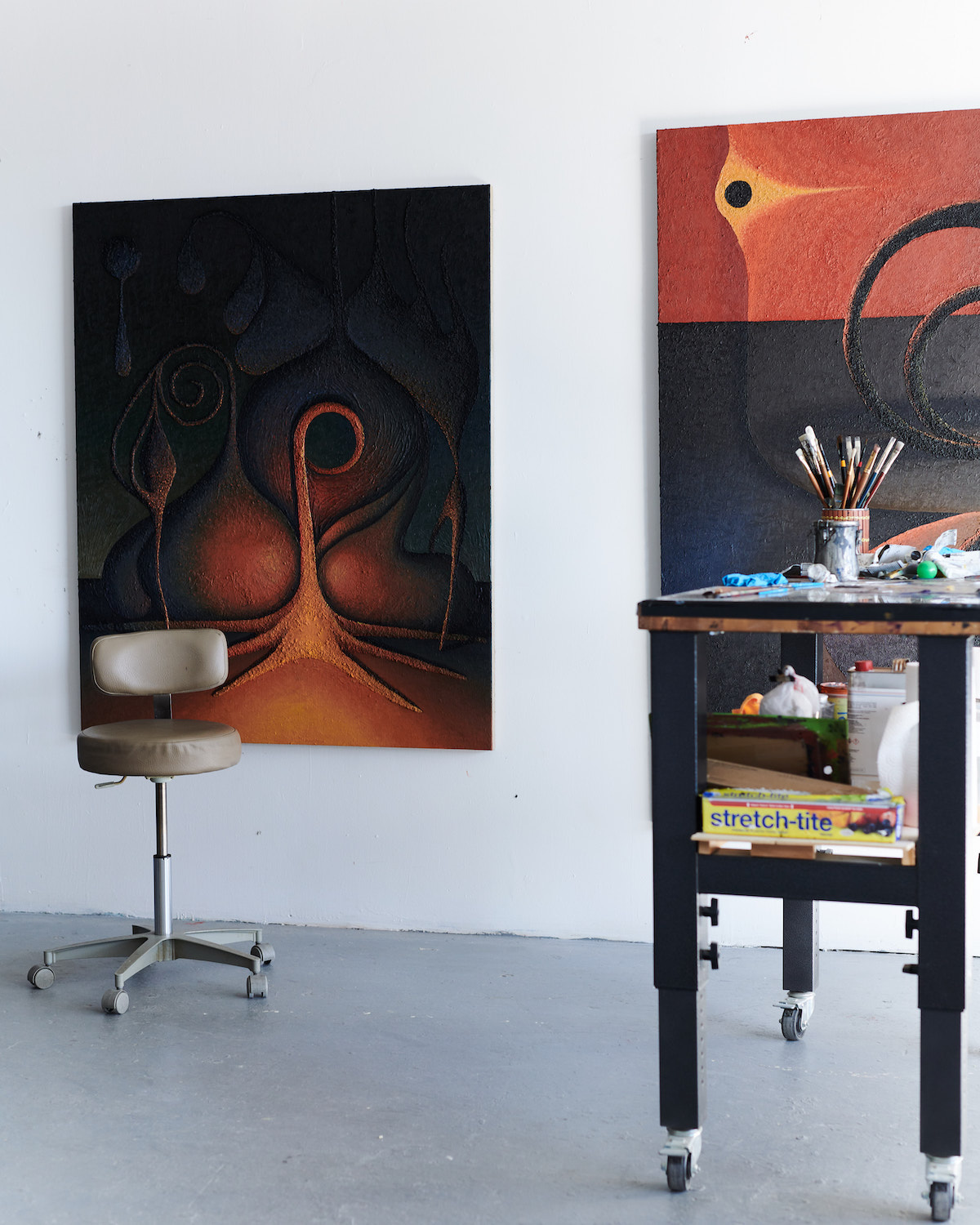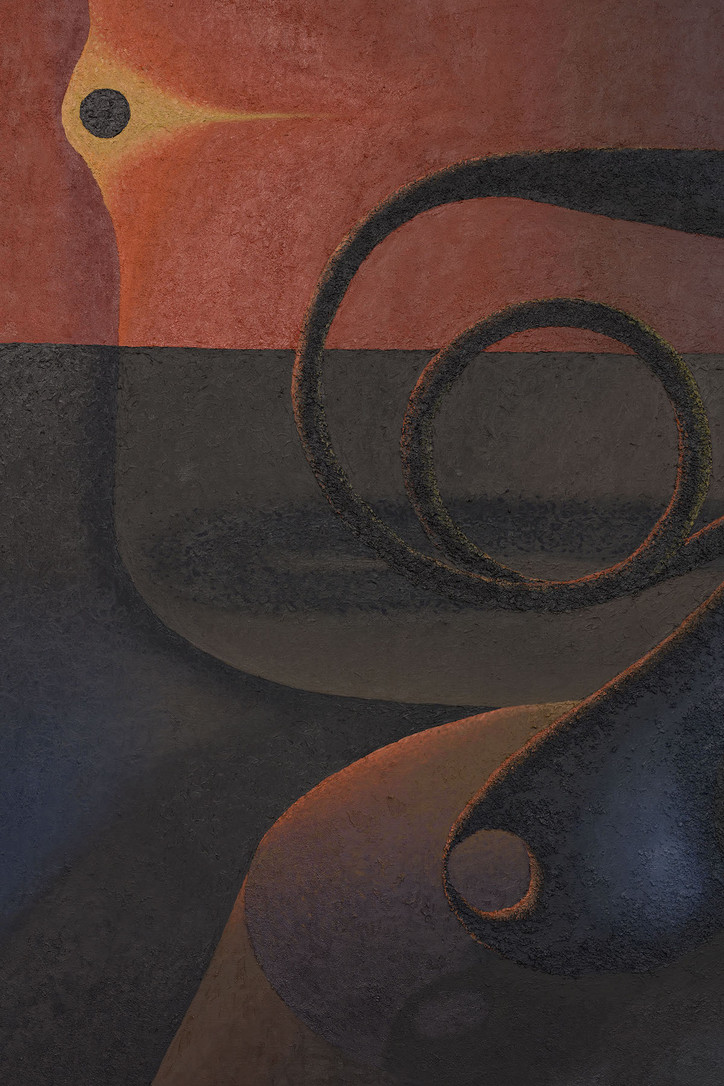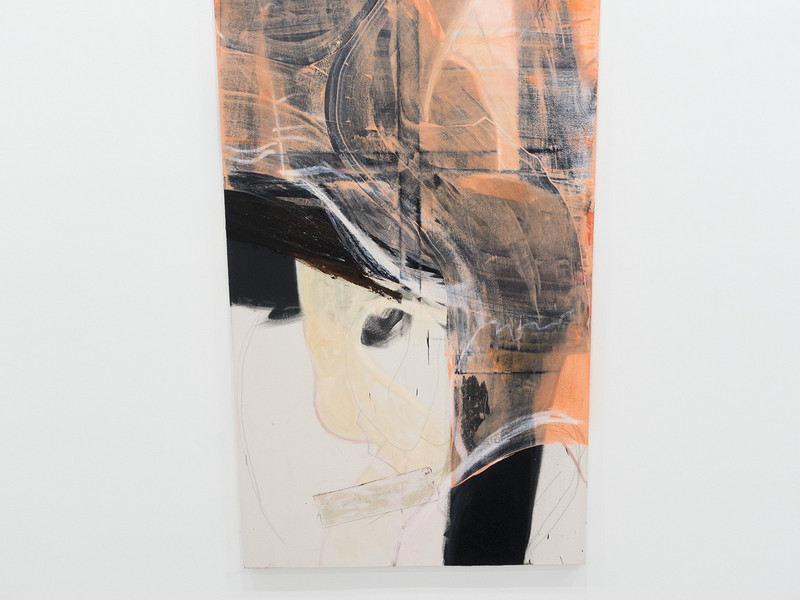Beca Lipscombe: We’re looking forward to seeing the collection come together, especially when Lucy's paintings are still in transit from Brussels, the mannequins and our collection are still in boxes that we haven't seen put together yet. This has been in the making for a while, but all the components haven't ever really found each other yet.
Sofia Hallström: I can imagine. Is it always like that? Does each collection come together in the presentation? Is that what unifies the collection?
Lucy McKenzie: With us living in different countries, we have to be very patient. We sometimes make collections on paper to show each other, just to have that kind of one-to-one, intermediary object between the final thing and the sketch or the idea. Through being in different countries, it's made us become very resourceful and find idiosyncratic ways to work because of the distance.
Beca Lipscombe: There's a huge level of trust that comes with making these collections. We're very different and we have very different ways of looking at things. I've got a designer head and Lucy’s got an artist's head. That level of trust is there so we improvise often. Our working relationship is very good, when I'm working with Lucy, I feel like I can do anything.
Sofia Hallström: I wanted to ask about the inspiration behind the collection, ‘Big Tobacco’. Could you expand on the theme, how it is translated into the design elements, and what aspects of Women's Tennis specifically influenced the collection?
Beca Lipscombe: It's to do with the visual of tennis and what people wear on court, mixed with the taboo of smoking. Until 1992, tobacco companies advertised within sport, which isn't that long ago. Nobody speaks about smoking anymore and, of course, there's a reason why it shouldn't be associated with sport, so we hint on it within this collection.
Lucy McKenzie: In terms of women's tennis, we've always been interested in the way cigarettes were marketed to women, the feminine packaging that almost looks like tampon boxes or something. To continue what Beca is saying, there has always been a struggle for women in the public eye. These powerhouse athletes who are still meant to perform femininity and being sponsored by a company that almost promotes smoking as a diet aid. It's really about mixed, complex messages from these female athletes who just stick their heads down and drive forward.
Sofia Hallström: Atelier E.B applies the notion of 'styling' as an artistic strategy. Can you talk about how styling becomes a means of artistic expression, and how it contributes to the overall narrative of the collections?
Lucy McKenzie: There’s so much within art that is profound and kept hidden. All this work goes into making an object, and often that is obscured. Styling brings a certain flatness, it accentuates the image of something. It's about how you read something in a moment as you flip through a magazine. Styling is the accessory, the location. It's meant to be the thing about us that has two sides: wanting it to be meaningful and profound as art can be and satisfying a public that just wants to wear it. Straddling those two needs, making nice clothes for people to wear and expressing our lived experience. We do our own styling, it's an extension of what we're making and how we want the world to see it and it's a pleasurable part of the process. Why would we give that to someone else!
Beca Lipscombe: Building a label from the ground up requires extensive effort, but the rewards are worth it. There's a significant amount of administrative work, contemplating materials, managing distribution, and handling emails. Styling, whether it's Lucy illustrating a collection or collaborating with photographer Morwenna Kearsley on photography, is an essential aspect. It's not merely an add-on; it's an extension of our creations. Through styling, we present our vision to the world as we intend it to be seen.
Lucy McKenzie: When we launched this company, our primary objective was to challenge the conventional notion of a fashion label. Rather than conforming to established norms and templates, we questioned why certain practices were necessary. We began with a clean slate, asking ourselves: "Why do things have to be this way? What if we approached it differently?" Our goal was to redefine what a fashion label could be, starting from the ground up. It's been an intensive process, but the sense of accomplishment is incredibly rewarding.
Sofia Hallström: Atelier E.B is known for small-scale production and ethical practices. Could you speak more about how this is reflected in the creation of this collection, particularly in terms of material choices, manufacturing, and distribution?
Beca Lipscombe: Many people describe us as ethical, but to us, that's simply how things should be done in today's world. It's not extraordinary; it should be the standard. Ethical practices are ingrained in our approach because it aligns with our values and principles. It's not the primary motivation; it's just inherent in our process. When we select textiles, we prioritise manufacturers who specialise in their craft. We assess the company's strengths in design and consider how their textiles can enhance our collection. Rather than imposing our ideas, we adapt to their expertise. We are adaptable, striving to offer products that are accessible to everyone. Manufacturing in Britain comes with its costs, but we prioritise fair treatment and refuse to exploit people. Our goal is to produce in the best way possible, respecting both people and processes.
